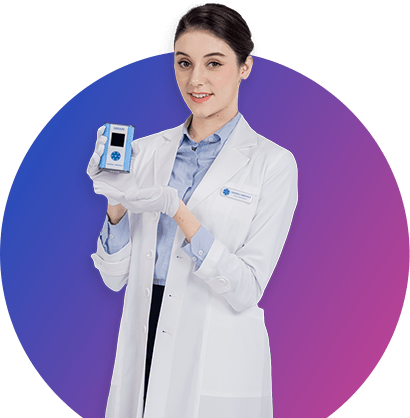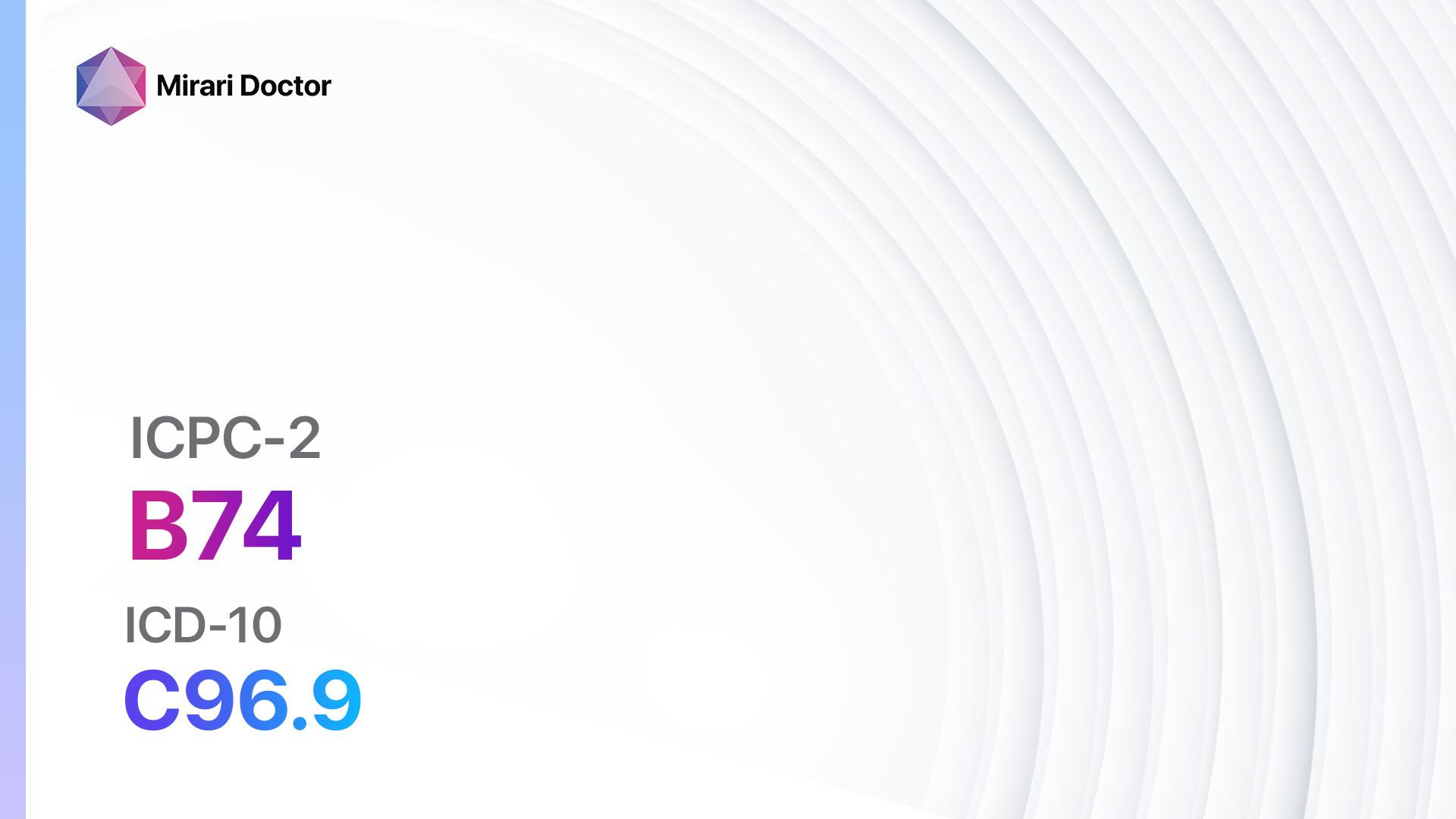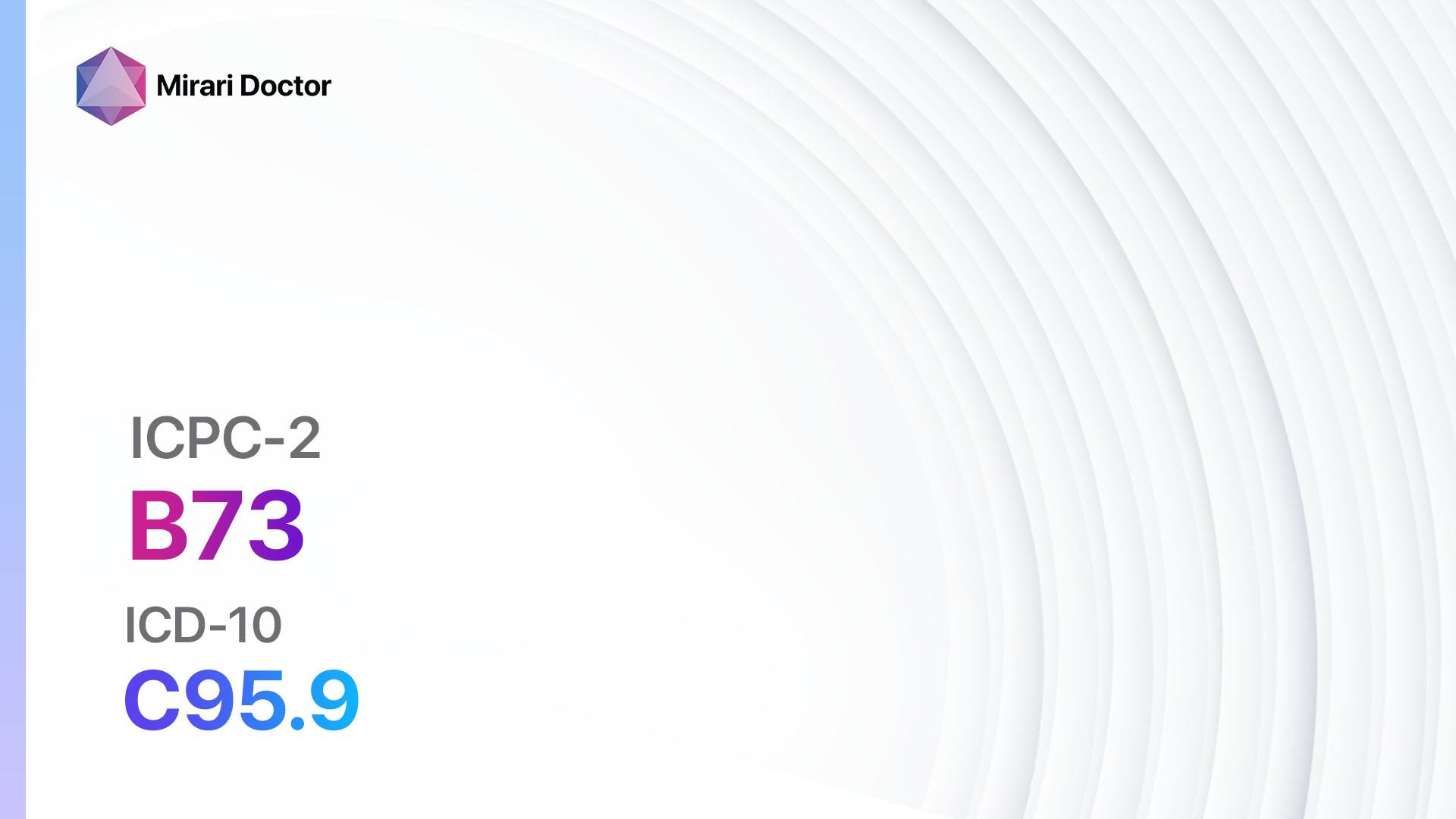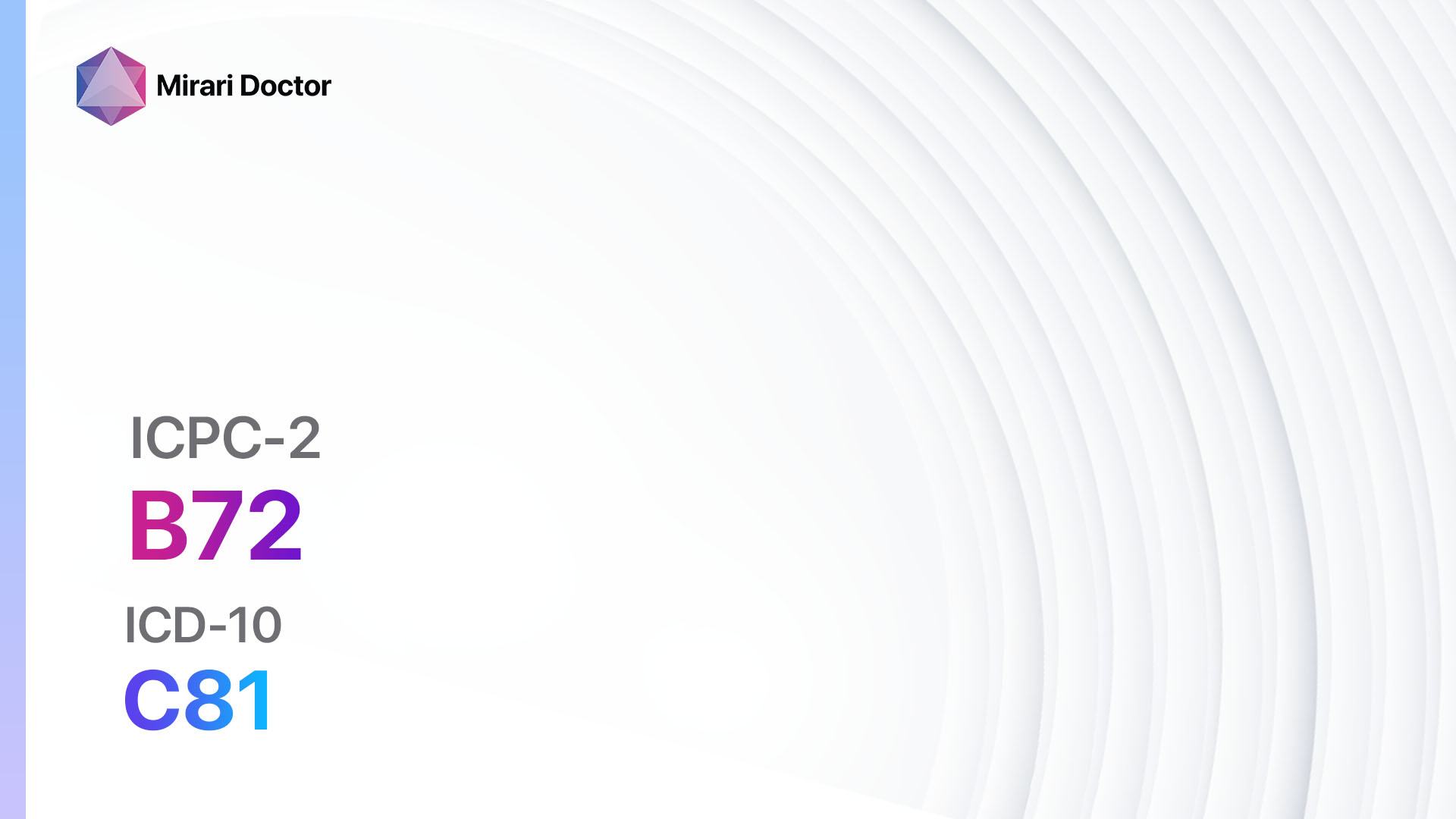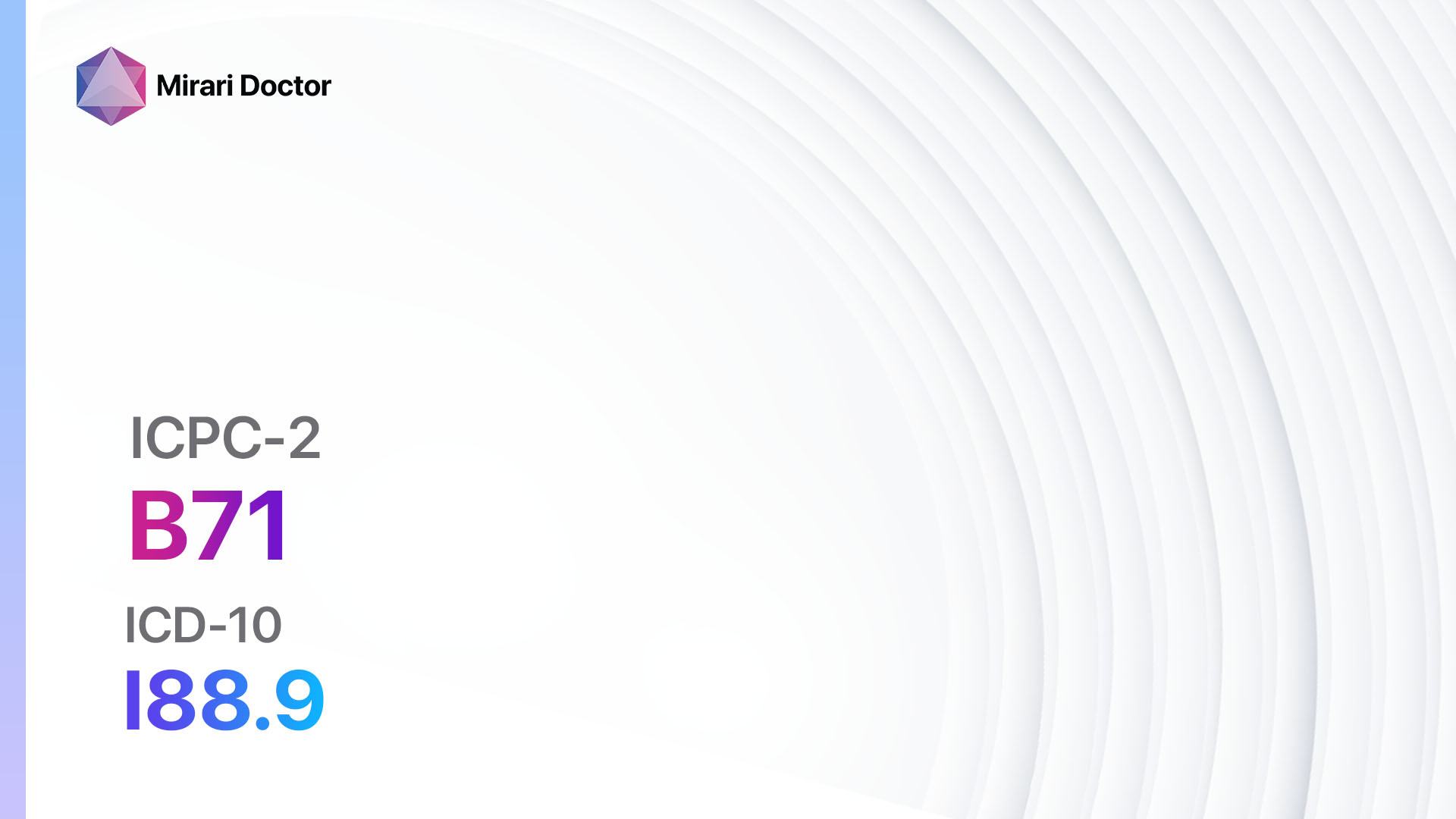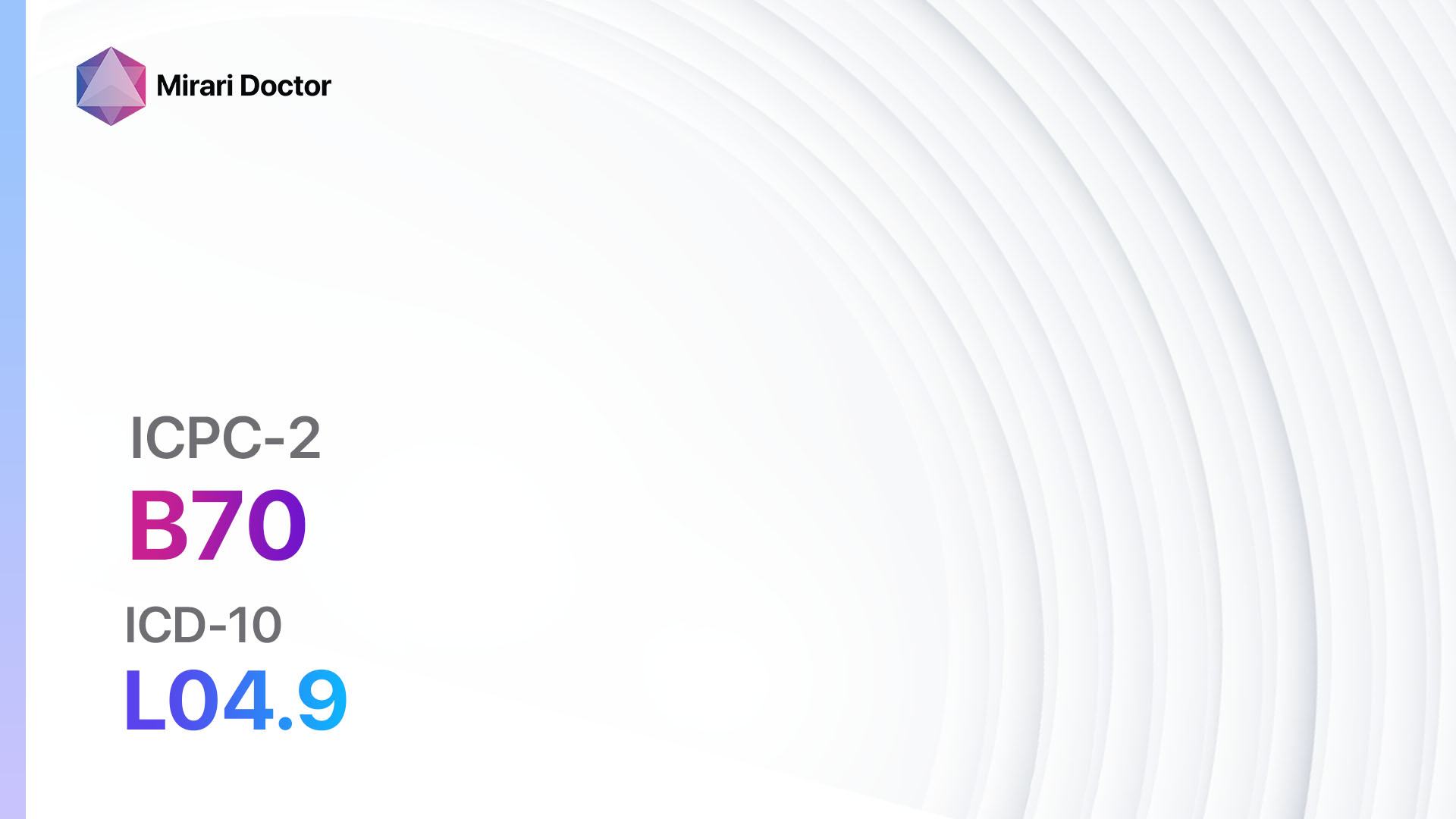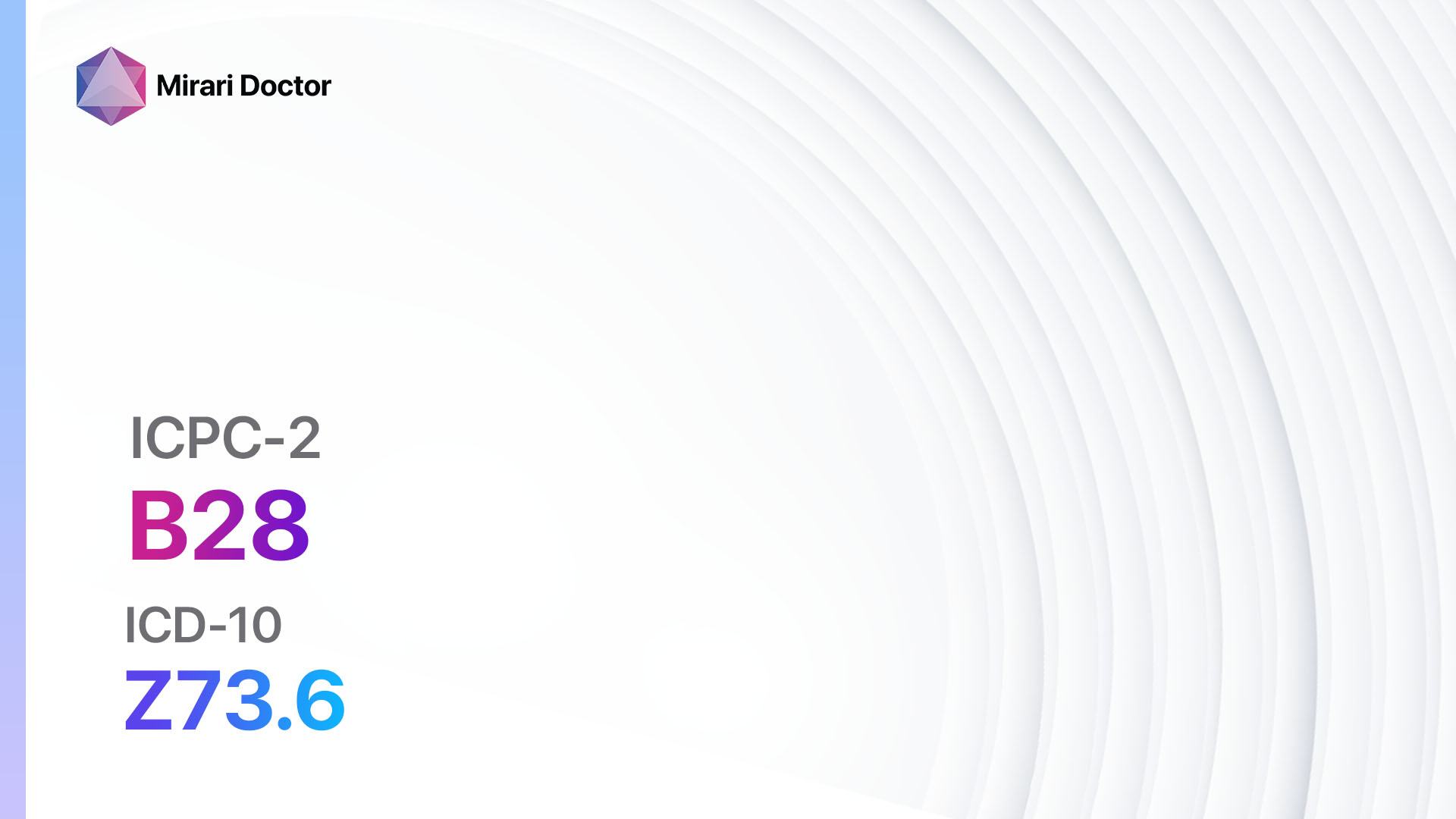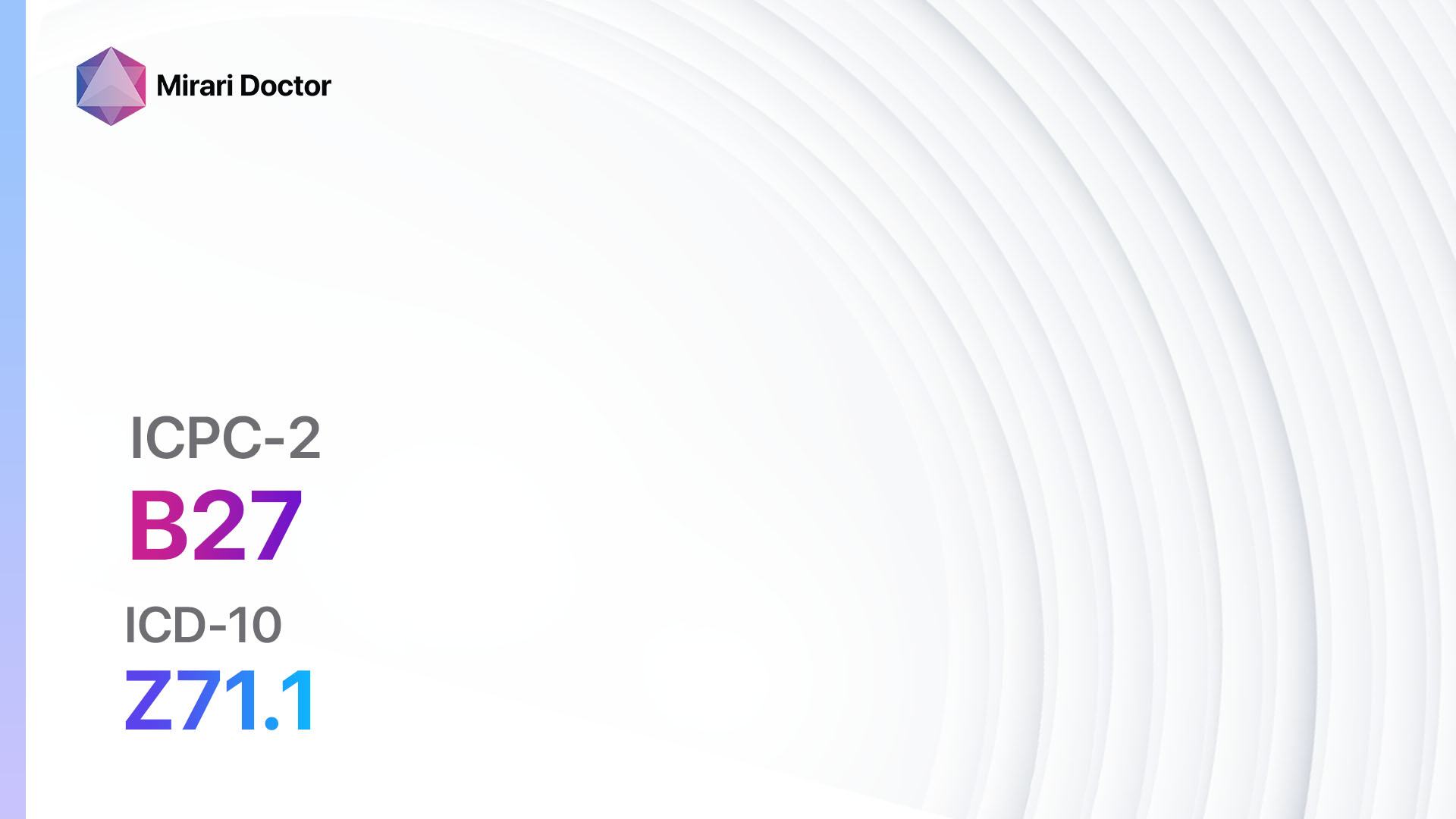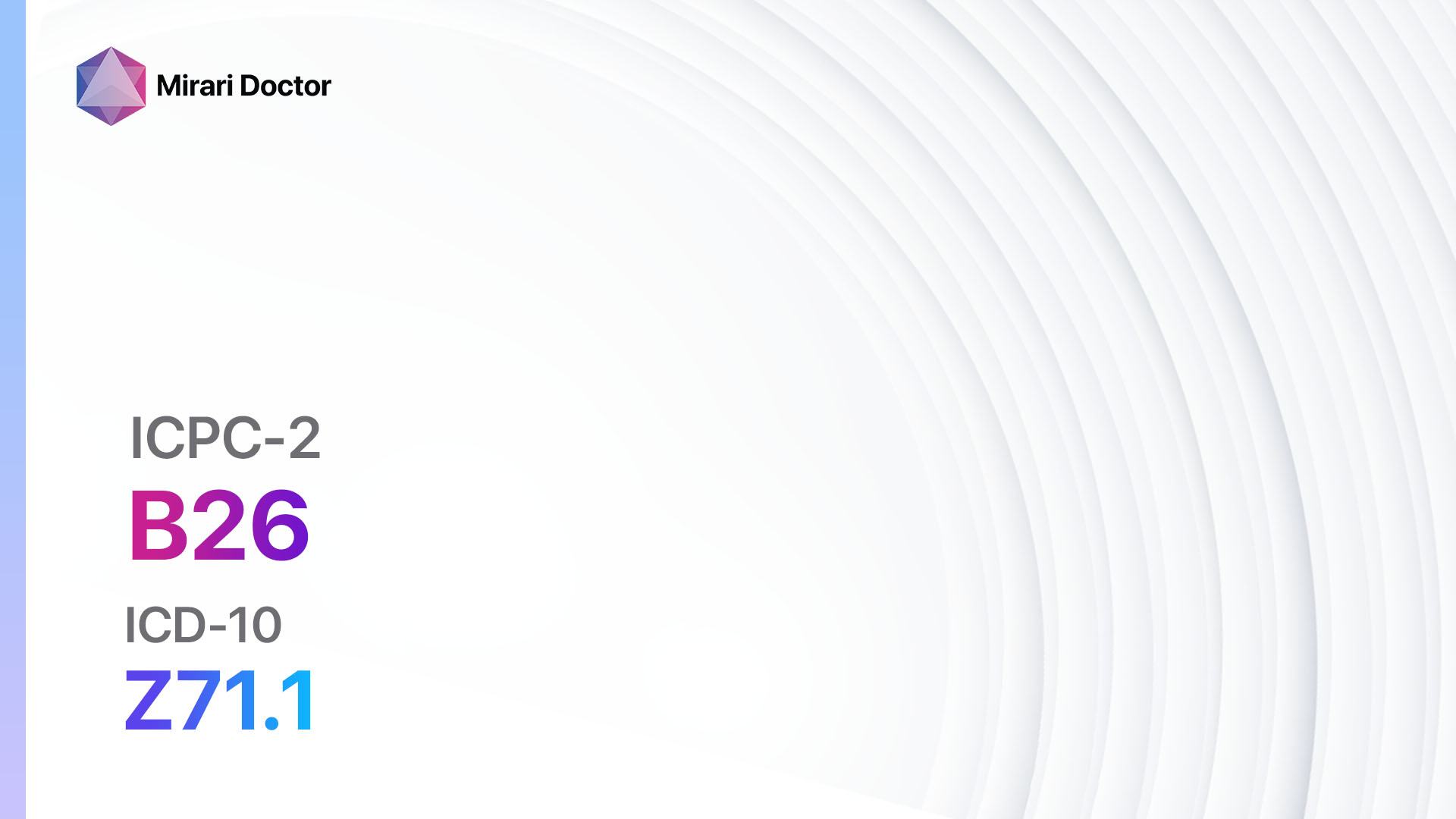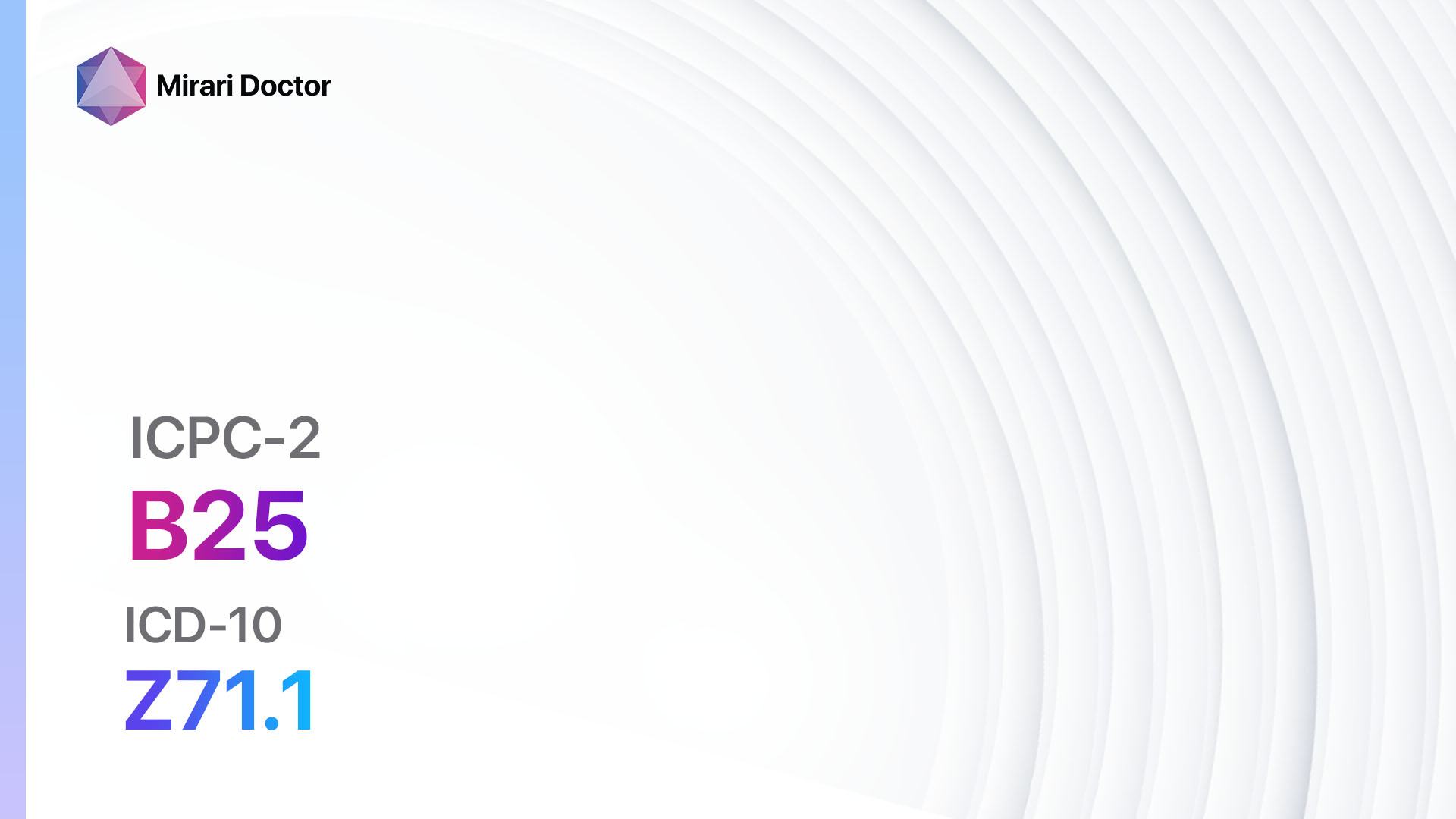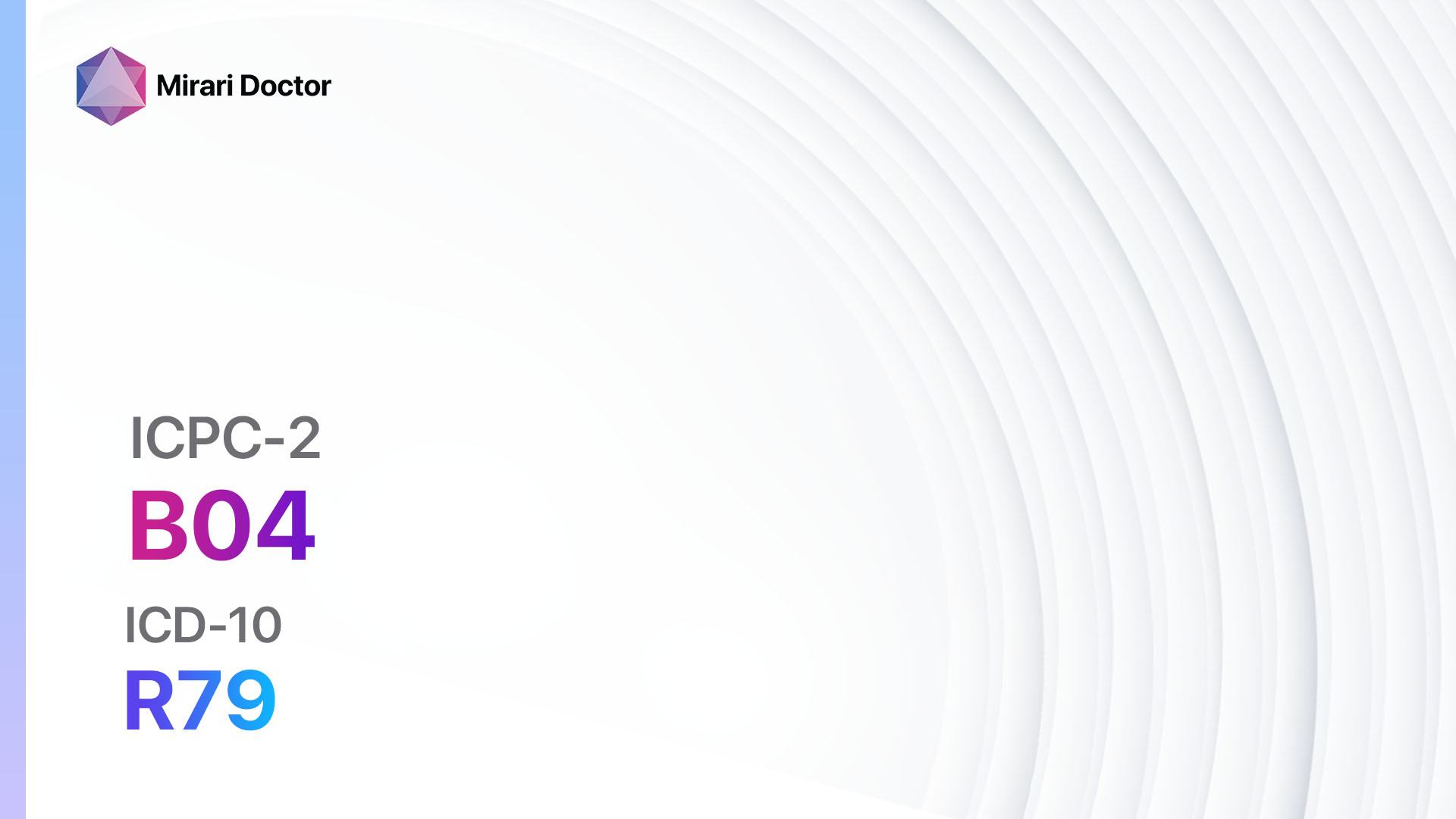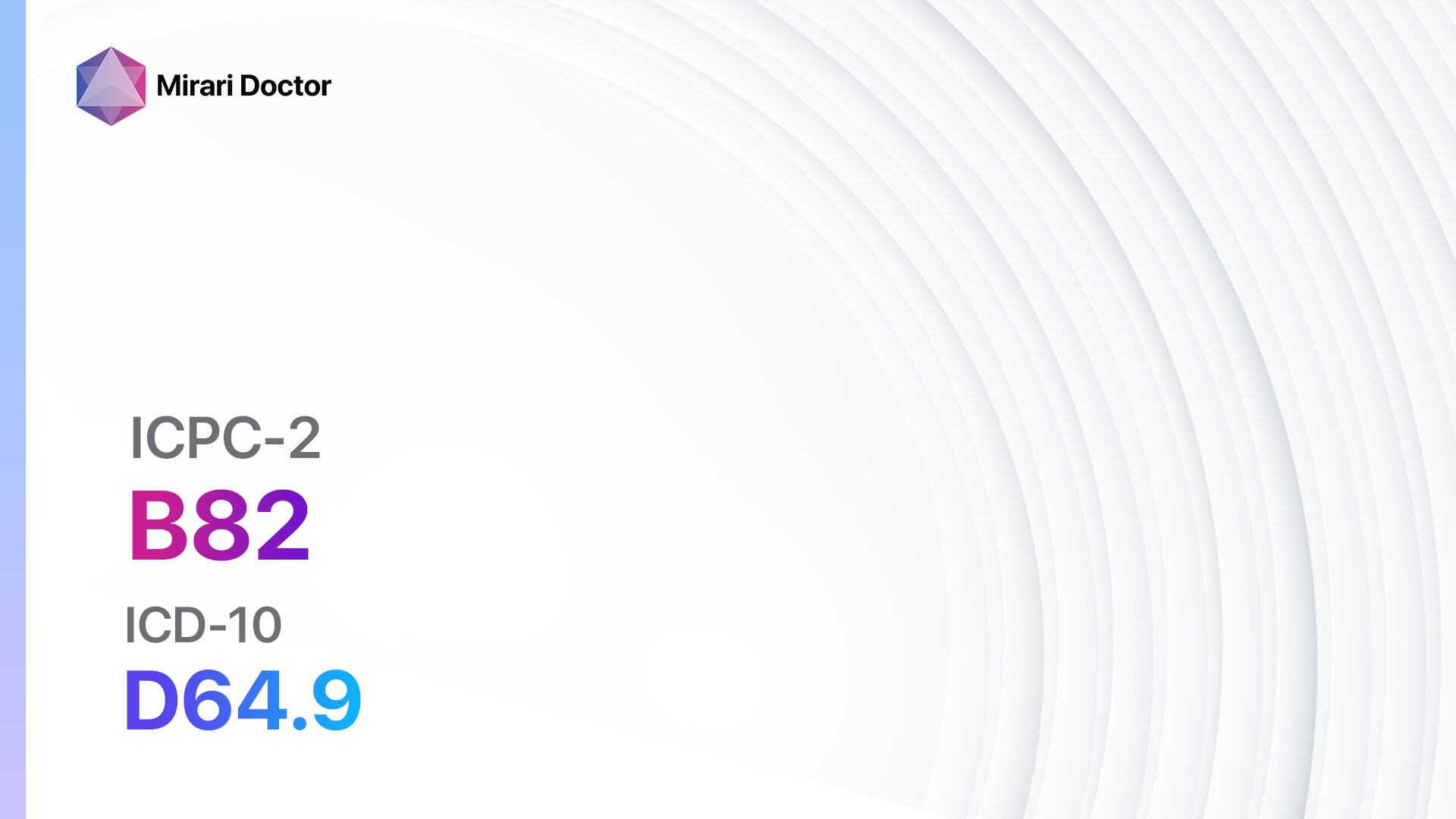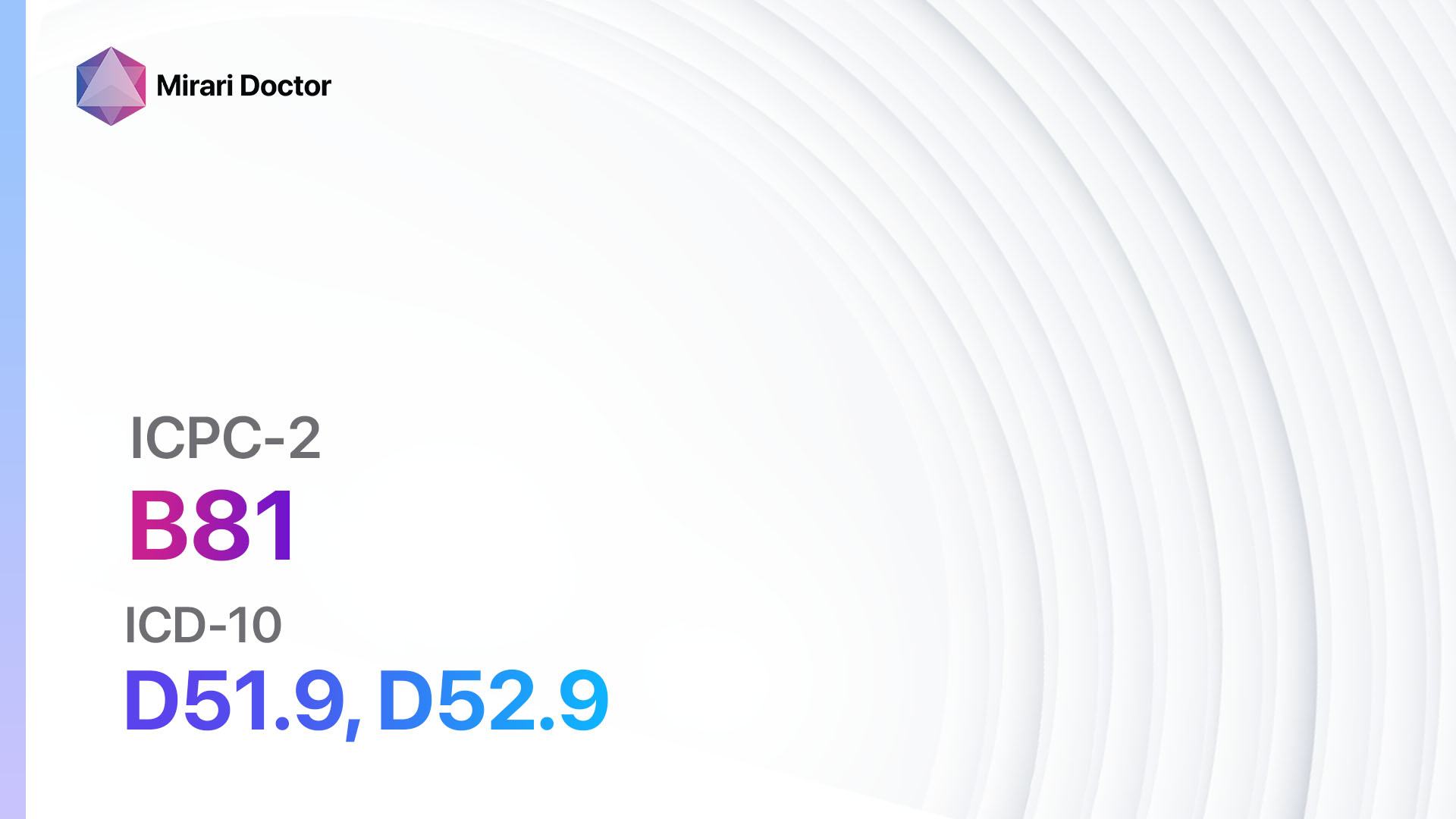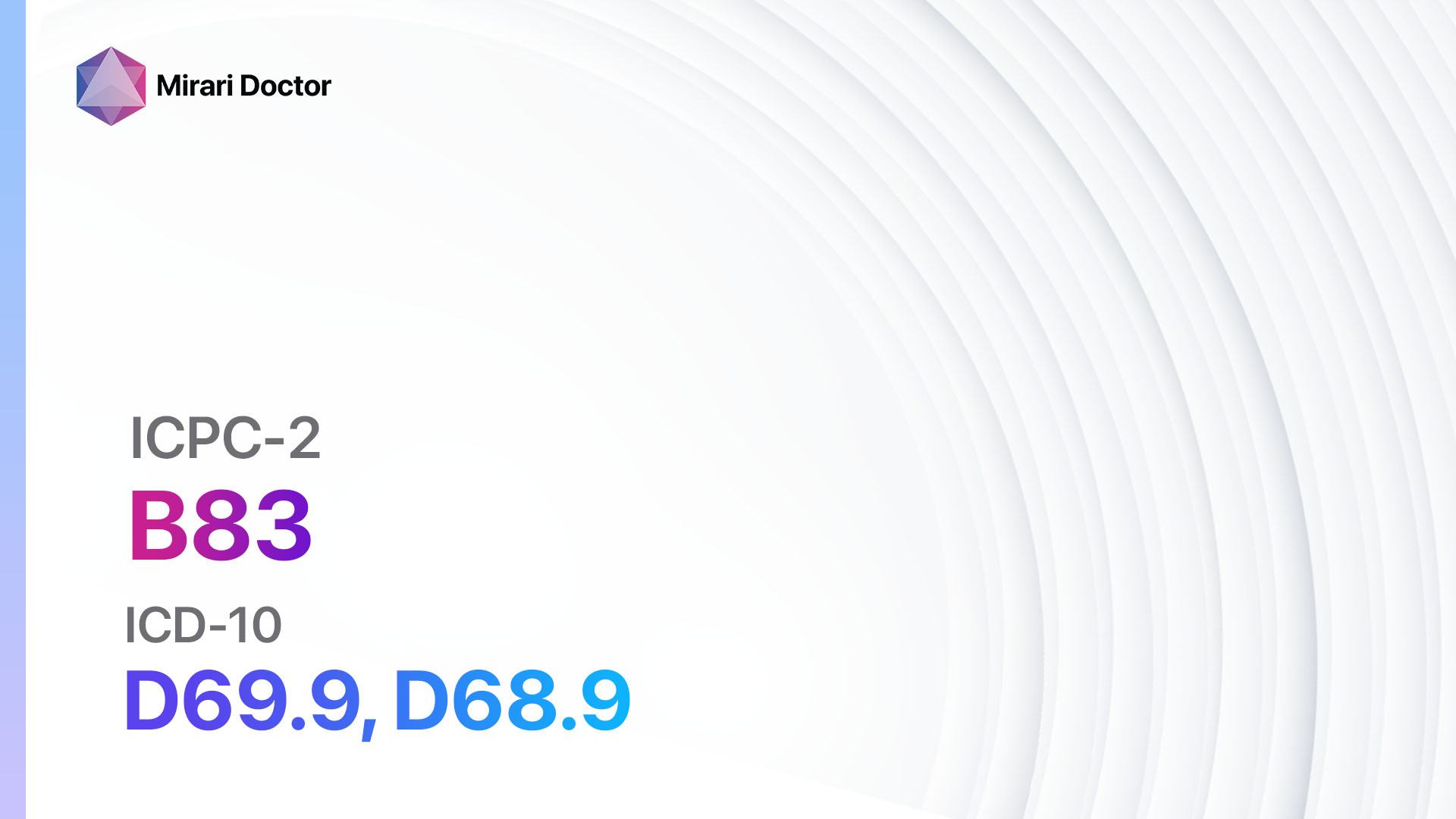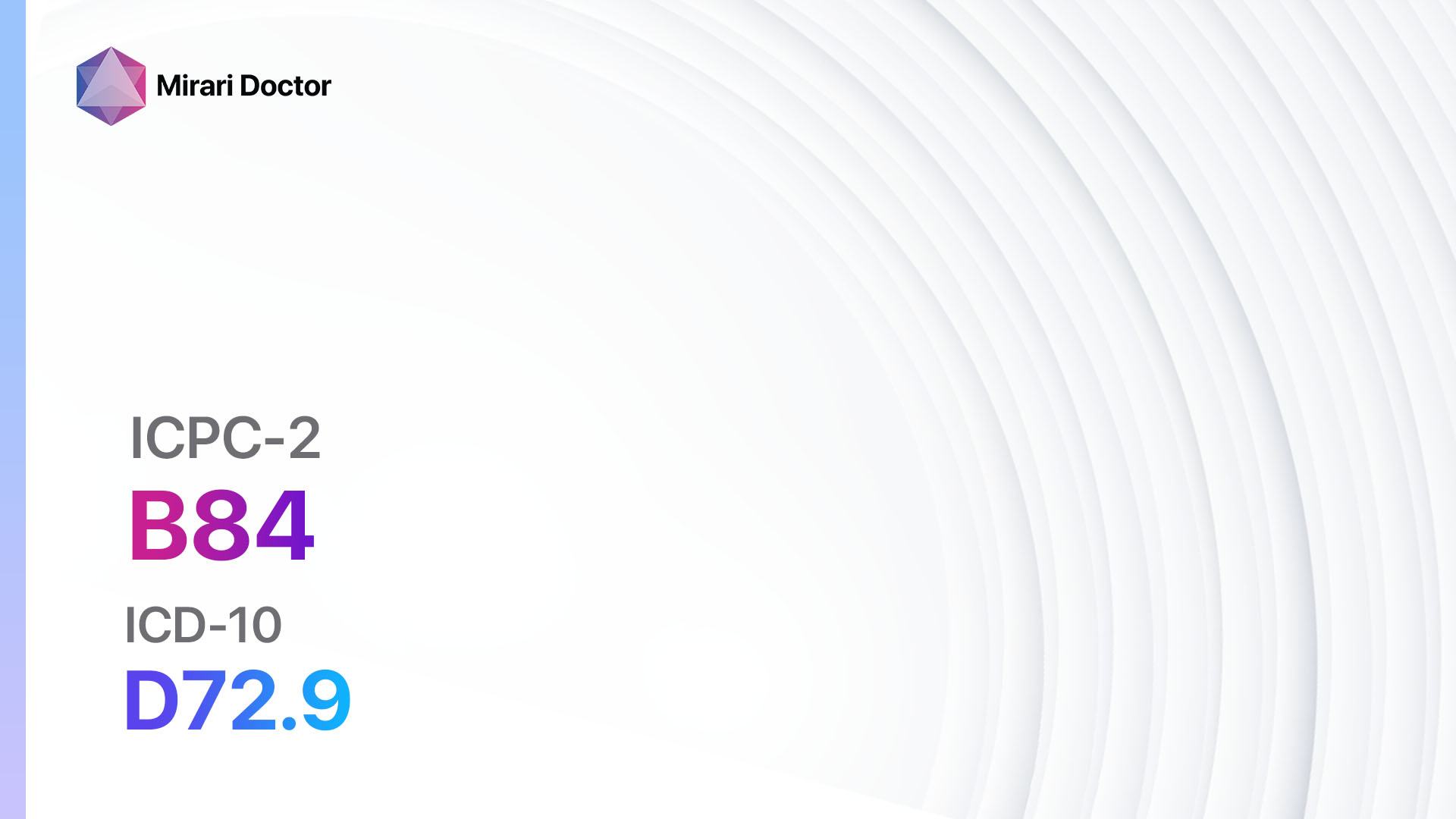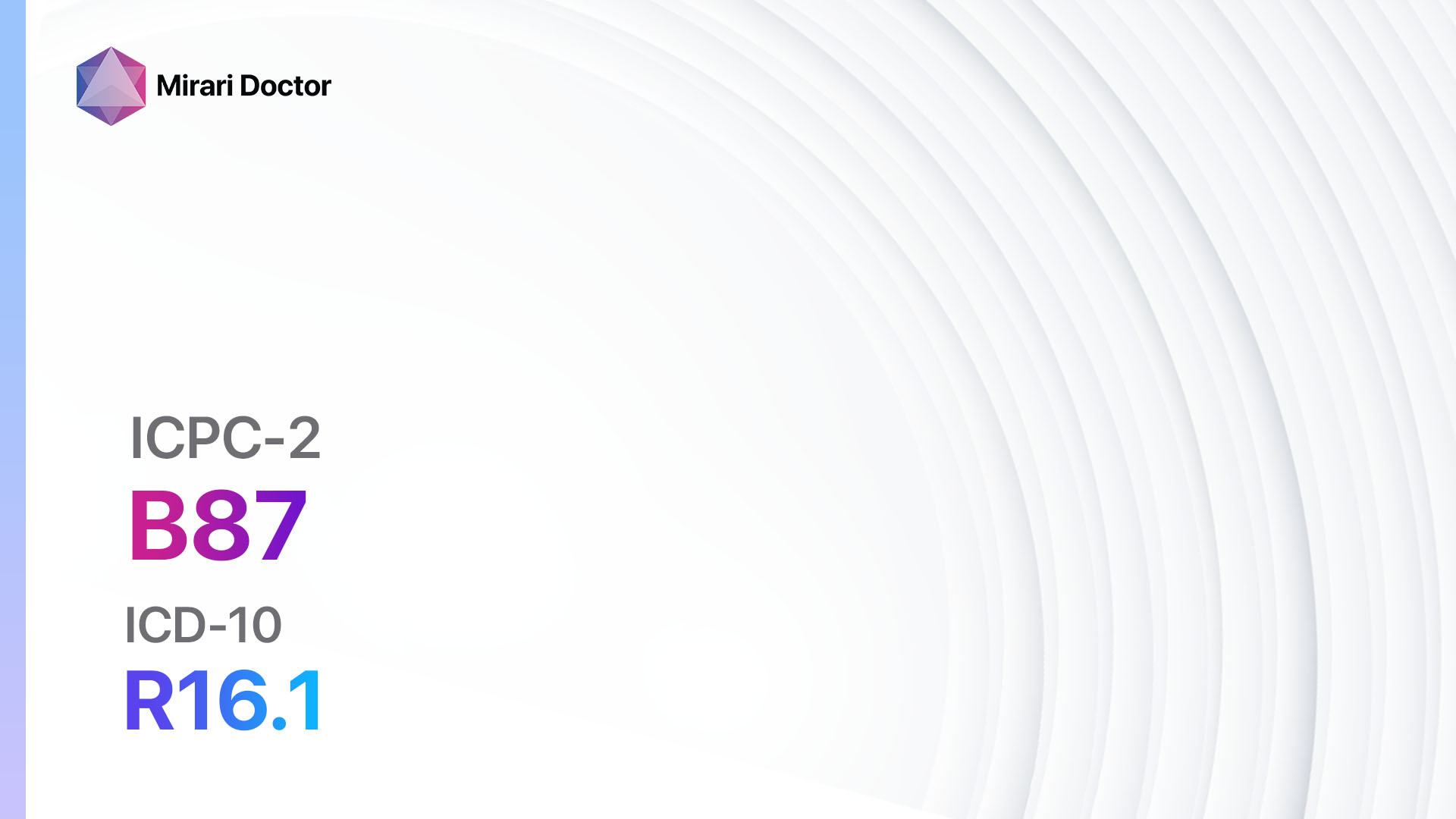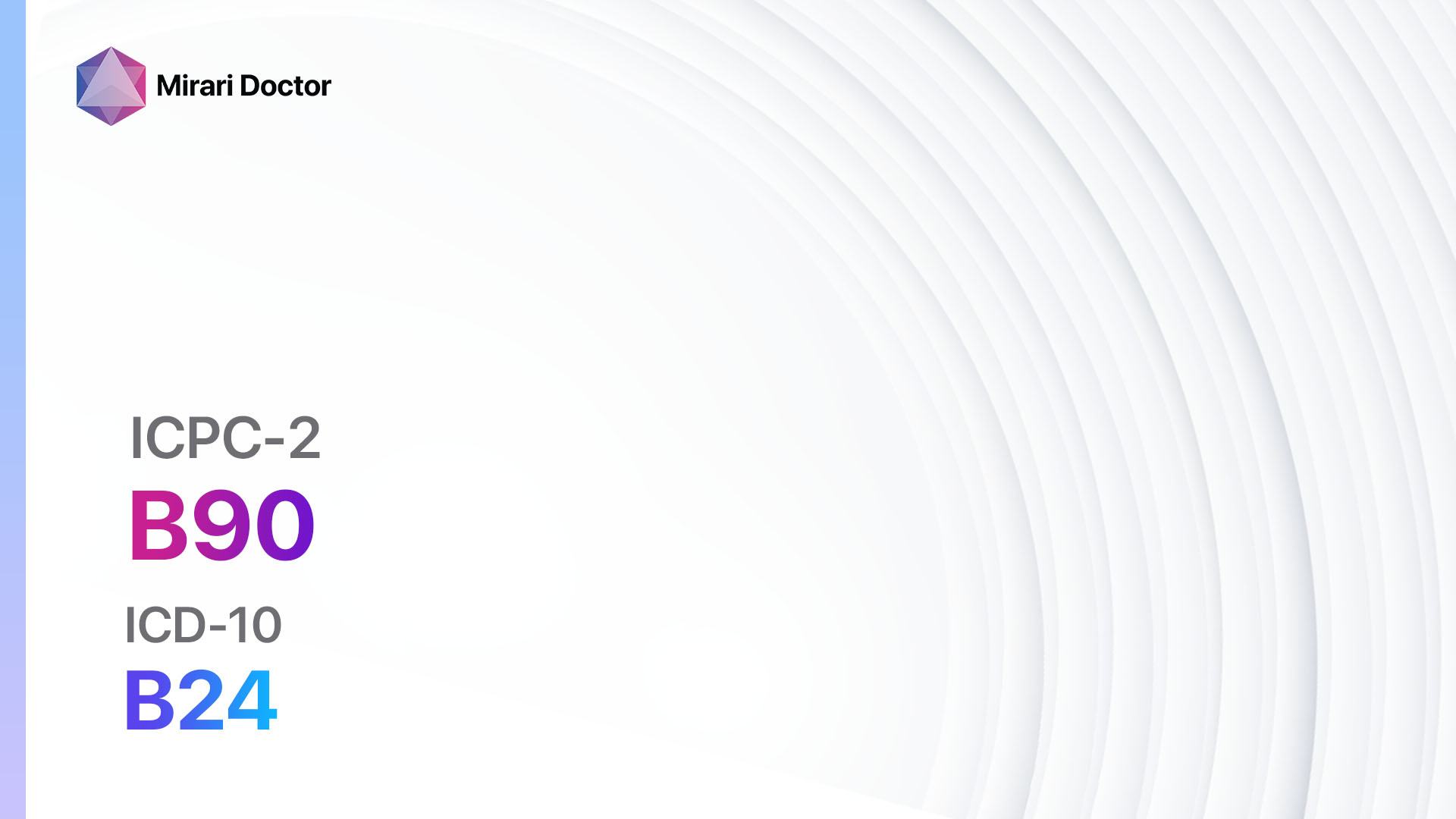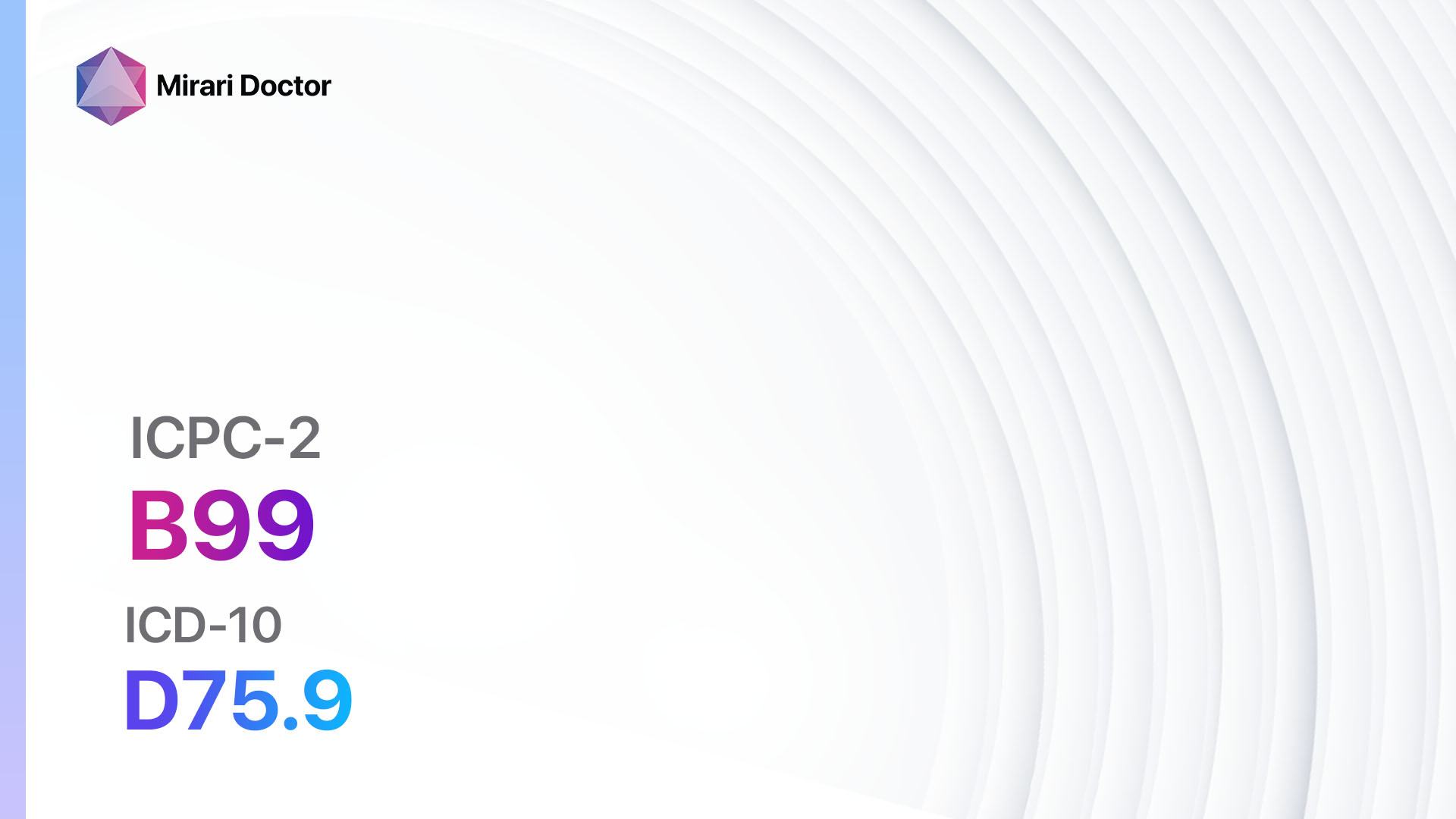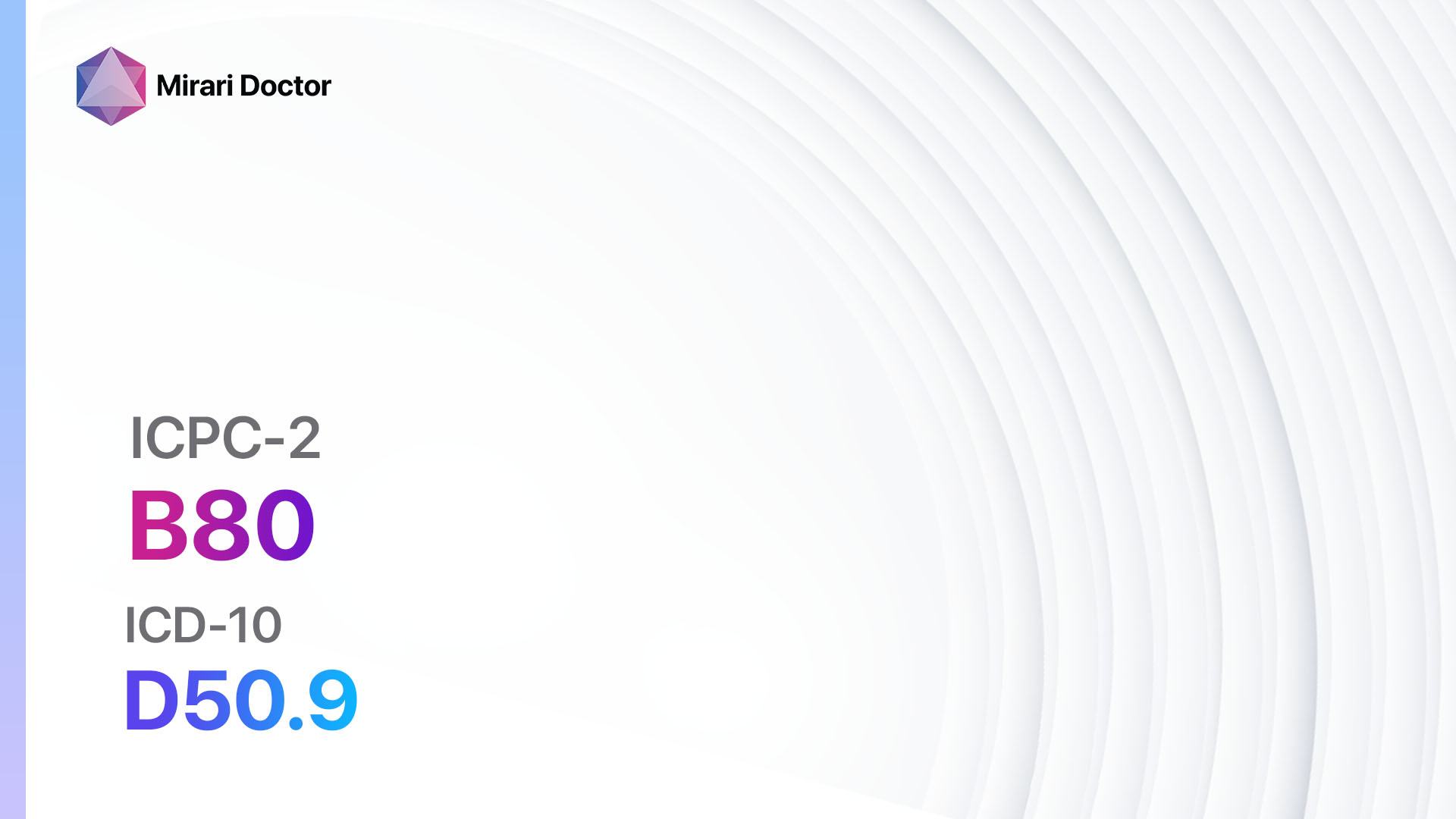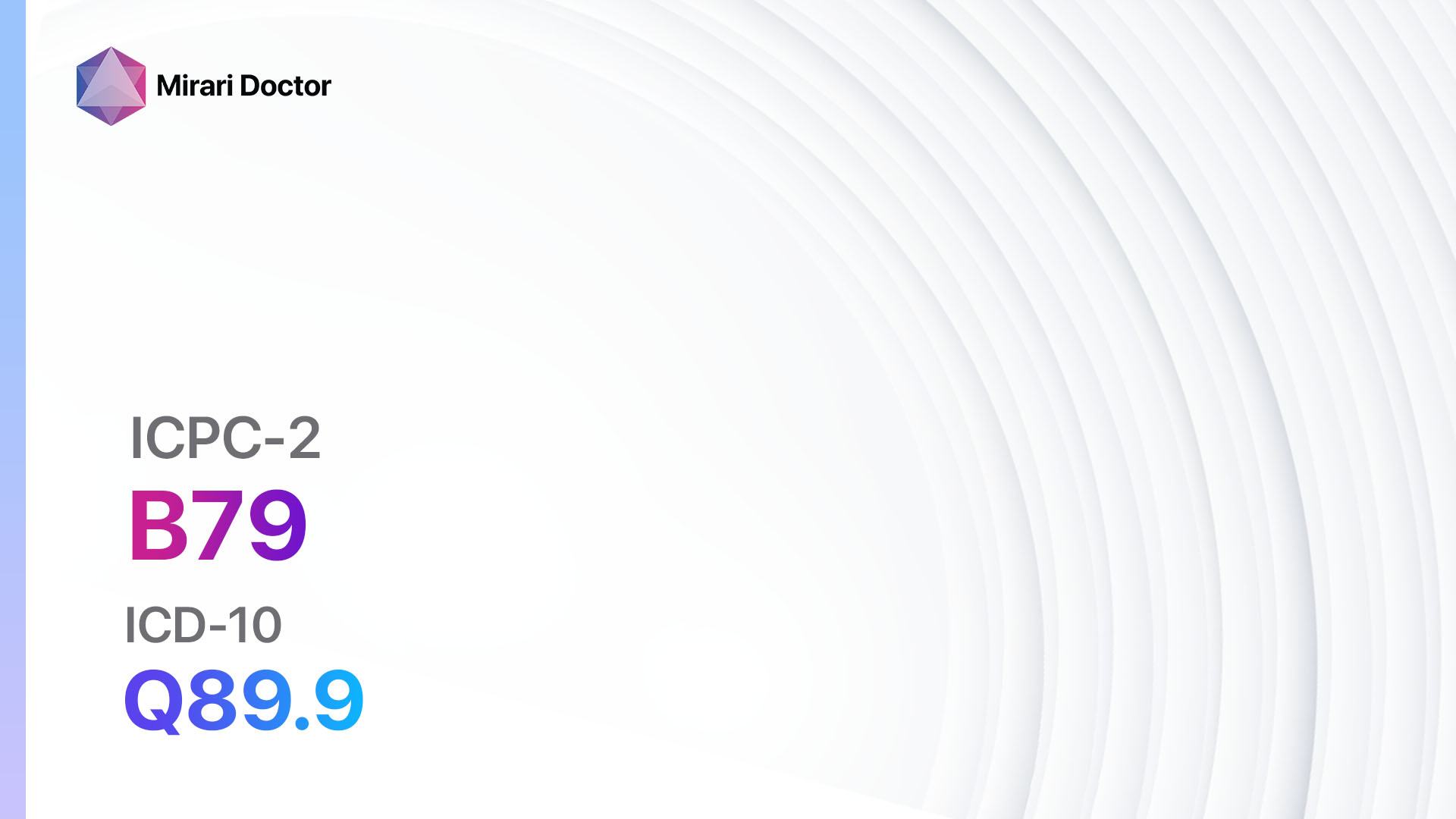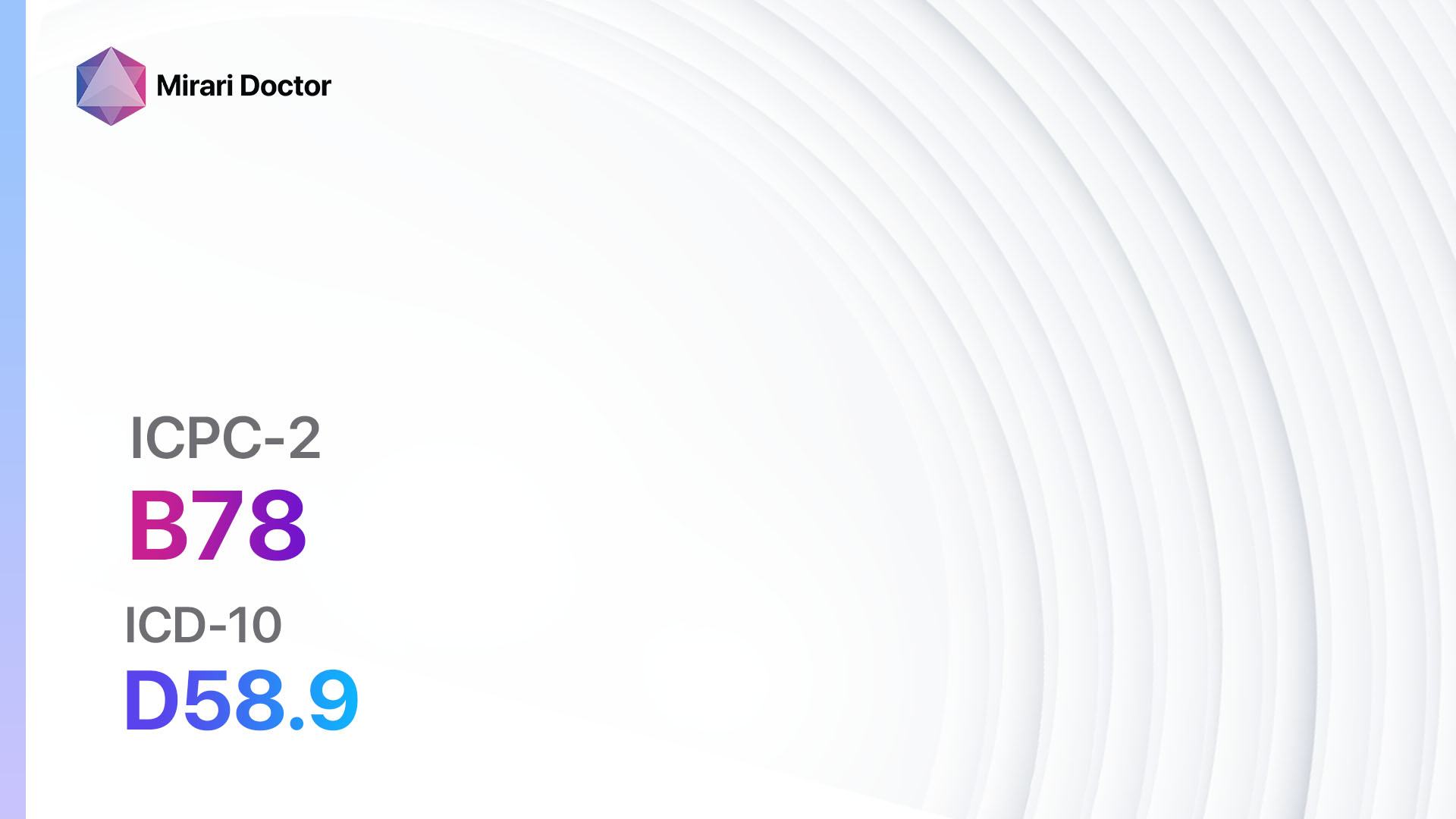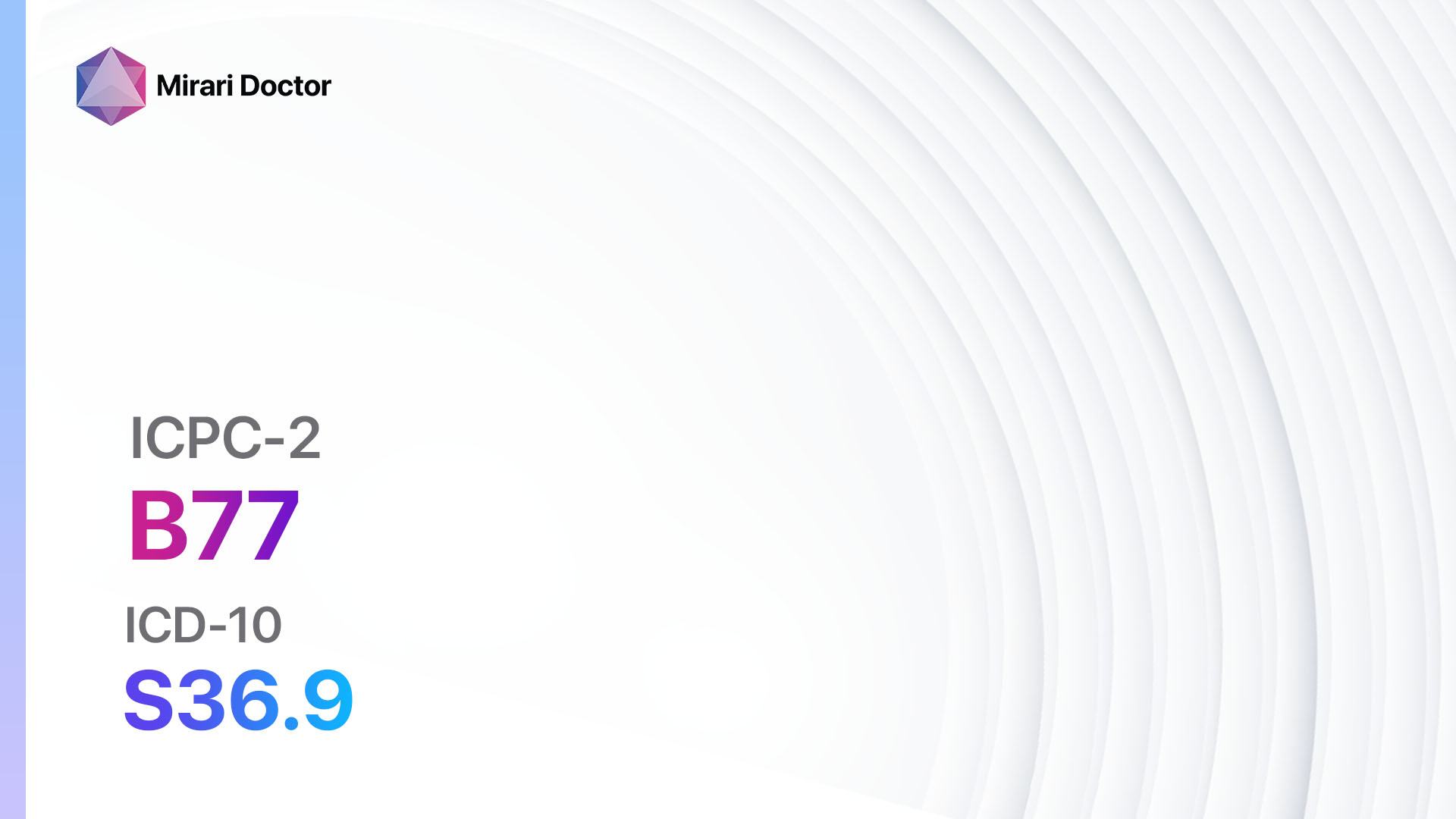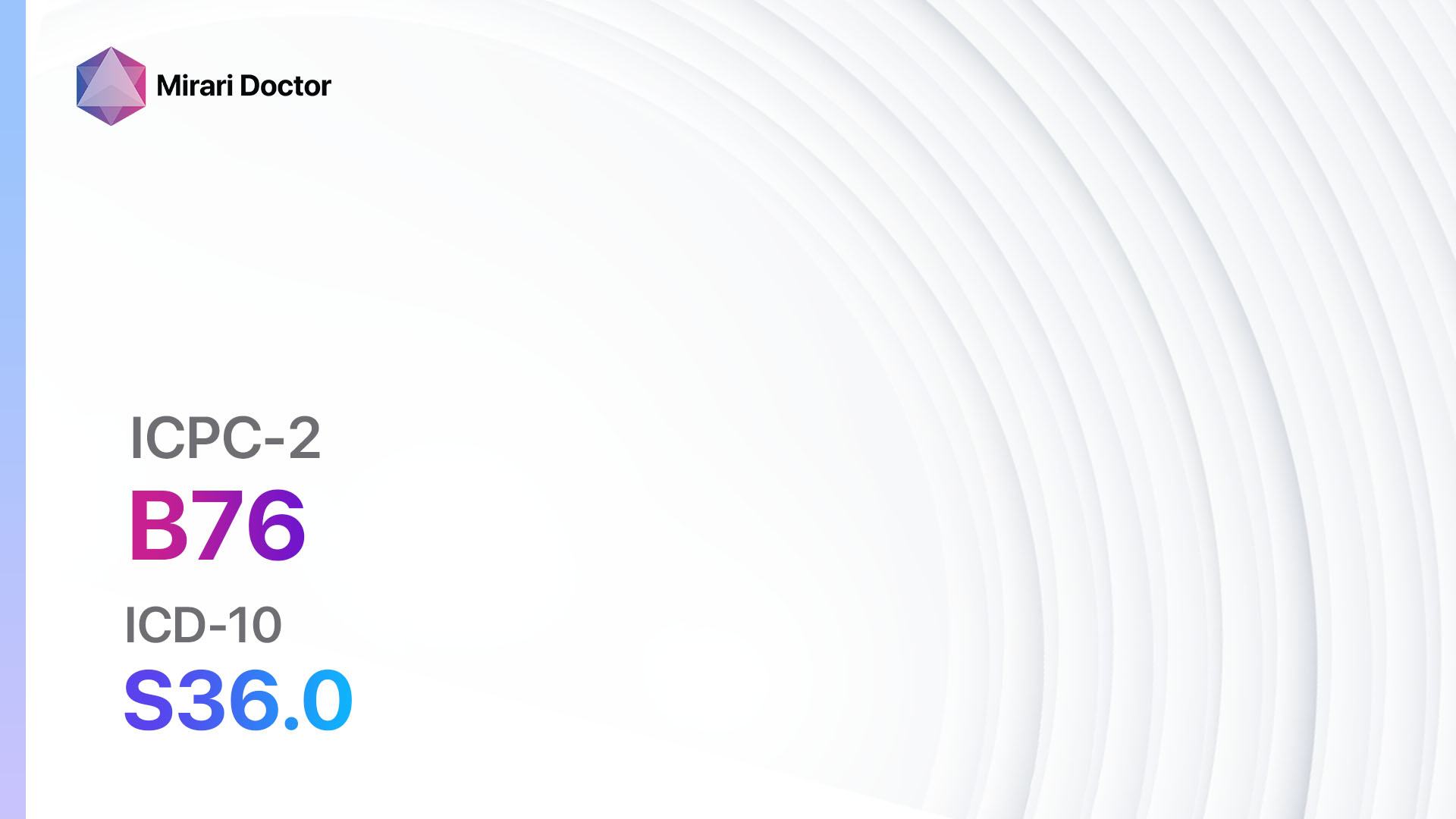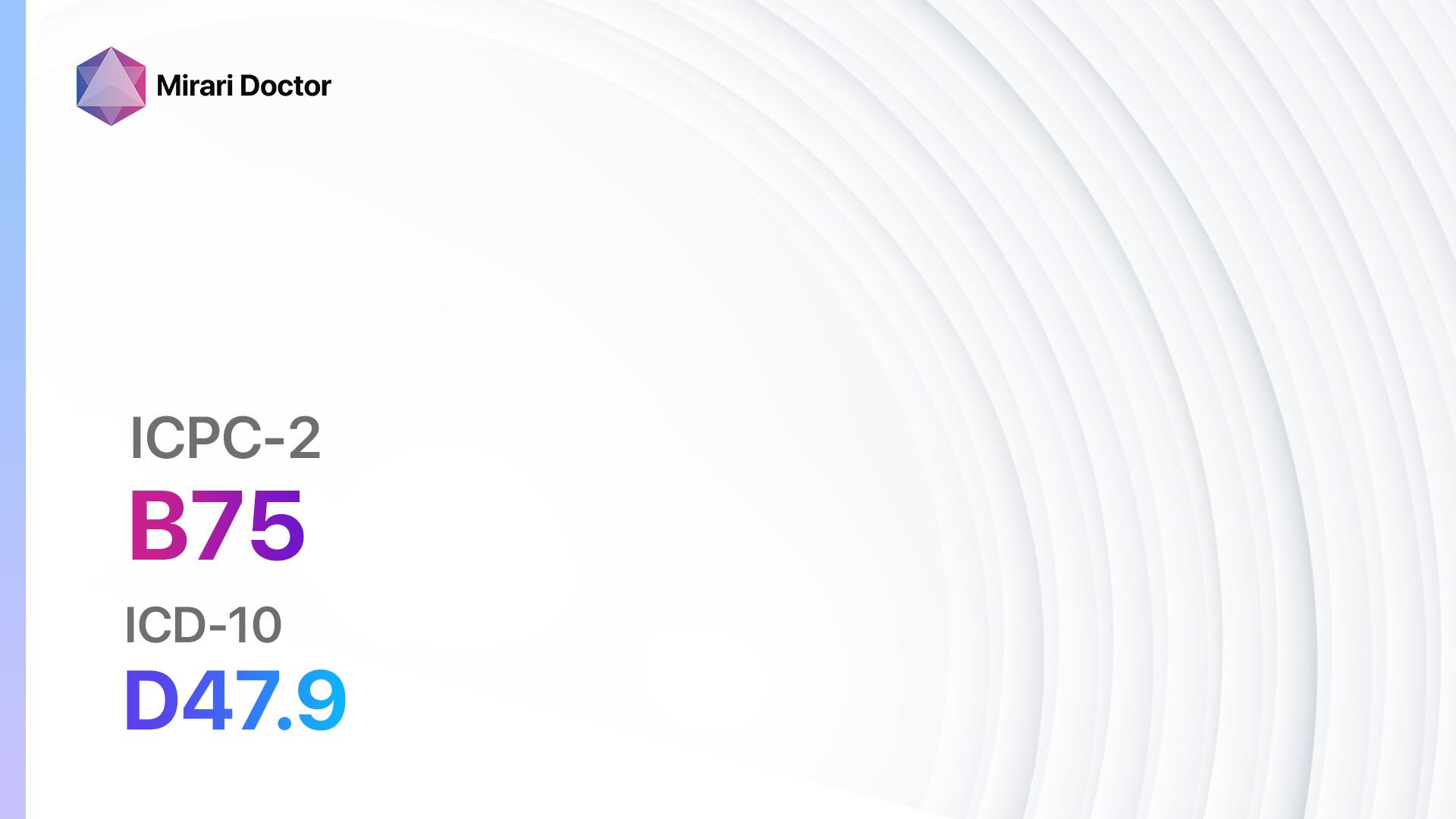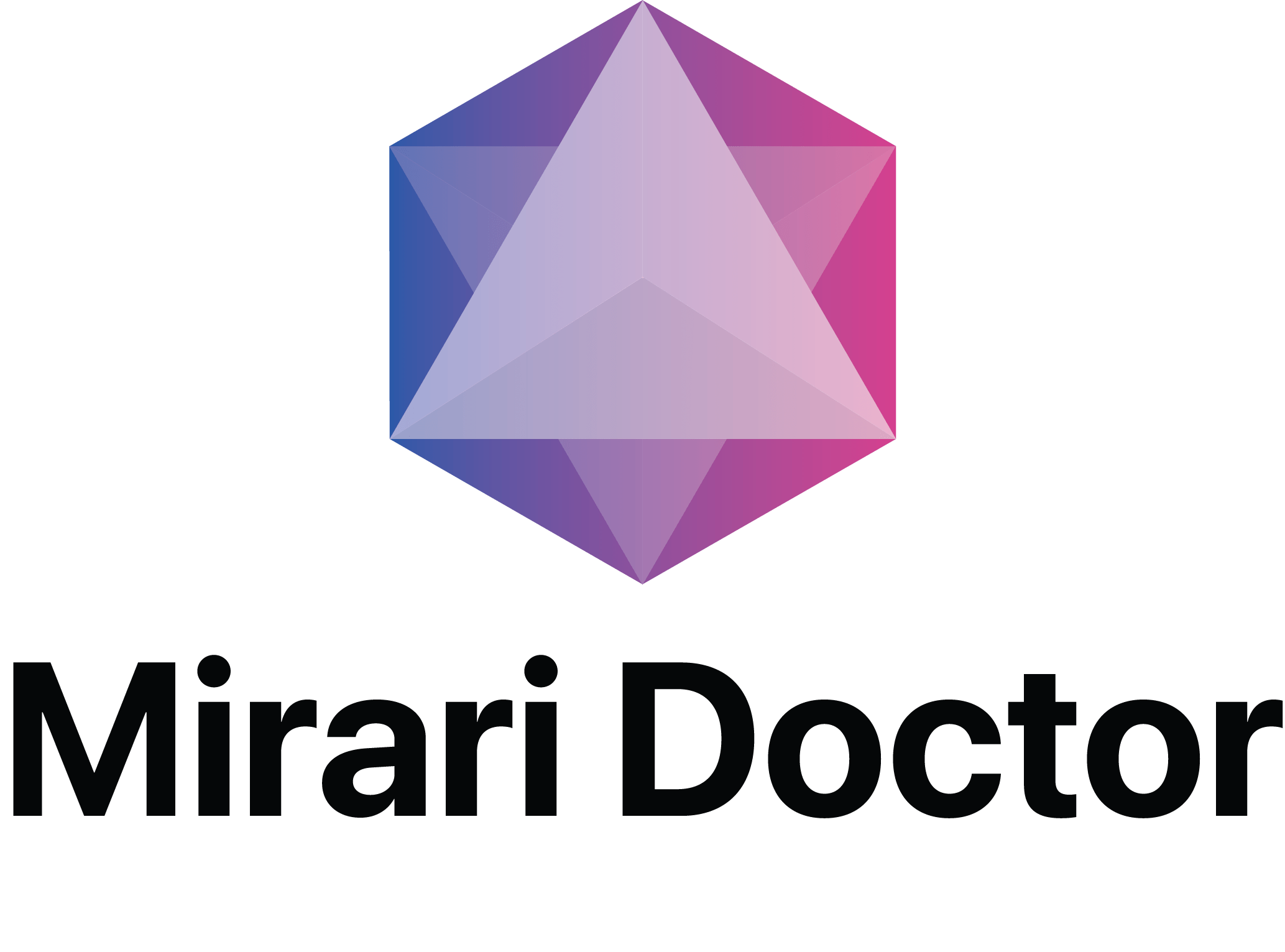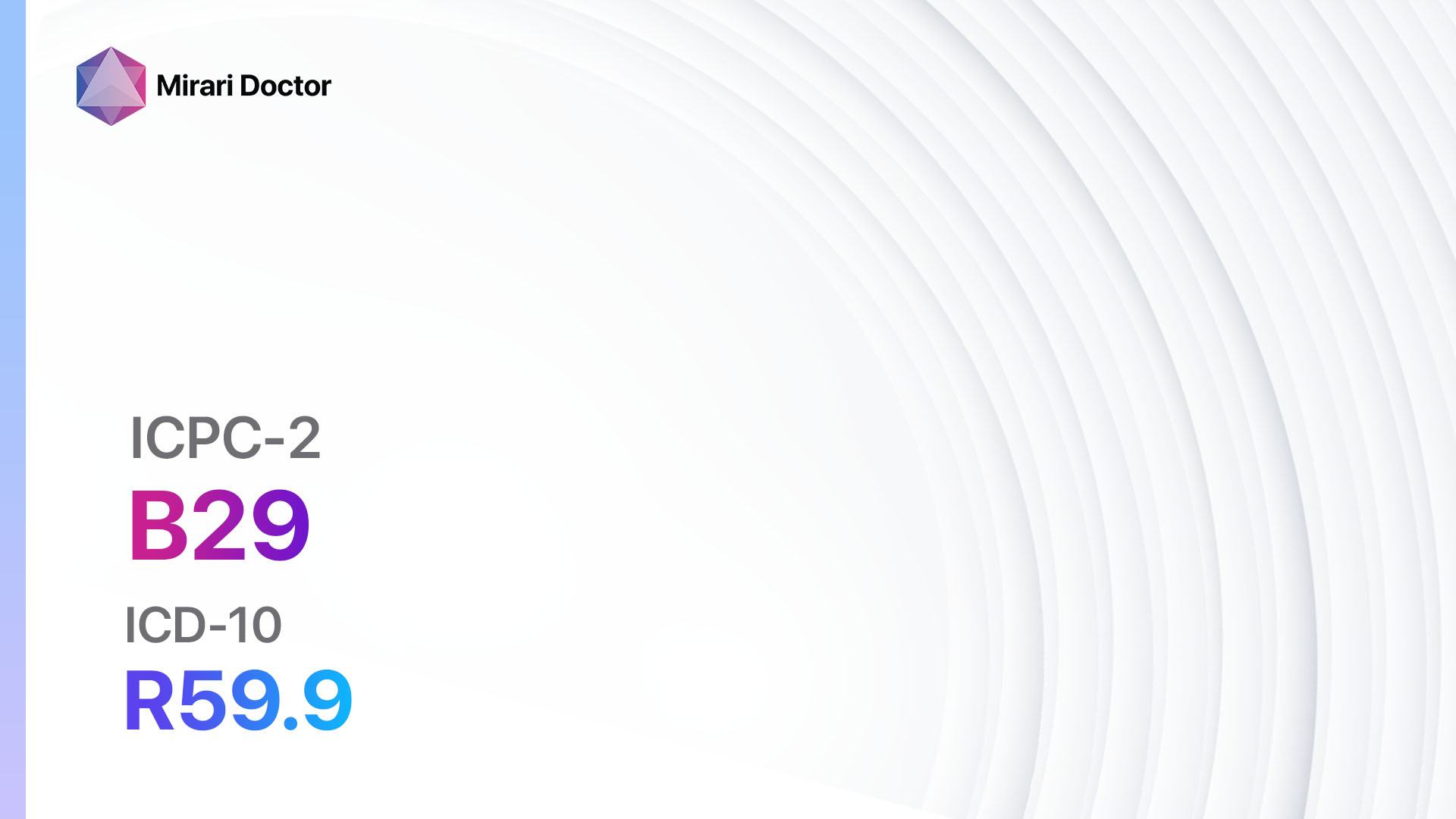
Introduction
Sympt/complt lymph/immune other refers to a group of symptoms and complaints related to the lymphatic and immune systems that do not fit into specific diagnostic categories[1]. These symptoms can vary widely and may be indicative of underlying conditions or diseases[2]. The aim of this guide is to provide an overview of the symptoms, causes, diagnostic steps, possible interventions, and lifestyle interventions for sympt/complt lymph/immune other.
Codes
- ICPC-2 Code: B29 Sympt/complt lymph/immune other[1]
- ICD-10 Code: R59.9 Enlarged lymph nodes, unspecified[3]
Symptoms
- Fatigue: Feeling tired or lacking energy[4]
- Swollen lymph nodes: Enlarged lymph nodes that may be tender to the touch[2]
- Recurrent infections: Frequent or persistent infections[4]
- Unexplained weight loss: Losing weight without trying[4]
- Night sweats: Excessive sweating during sleep[4]
- Generalized itching: Persistent itching without a known cause[4]
- Skin rashes: Abnormal skin changes or eruptions[2]
- Joint pain: Pain or discomfort in the joints[5]
- Muscle weakness: Reduced strength or ability to perform physical tasks[2]
- Abdominal pain: Pain or discomfort in the abdominal area[2]
Causes
- Infections: Viral, bacterial, or fungal infections can affect the lymphatic and immune systems[2]
- Autoimmune disorders: Conditions where the immune system mistakenly attacks healthy cells and tissues[5]
- Cancer: Certain types of cancer, such as lymphoma or leukemia, can affect the lymphatic and immune systems[2]
- Medications: Some medications can have side effects that affect the lymphatic and immune systems[2]
- Environmental factors: Exposure to certain toxins or pollutants can impact immune function[2]
Diagnostic Steps
Medical History
- Gather information about the patient’s symptoms, including their duration and severity
- Identify any risk factors, such as recent infections or exposure to toxins
- Assess the patient’s medical history, including any previous diagnoses or treatments related to the lymphatic or immune systems
Physical Examination
- Perform a thorough physical examination, paying attention to the lymph nodes, skin, and other relevant areas
- Look for signs of inflammation, swelling, or other abnormalities
- Check for any specific findings that may suggest a particular diagnosis or condition
Laboratory Tests
- Complete blood count (CBC): Measures the levels of different blood cells, which can indicate infection or other abnormalities[6]
- Erythrocyte sedimentation rate (ESR): Measures the rate at which red blood cells settle in a tube, which can indicate inflammation[6]
- C-reactive protein (CRP): Measures the level of inflammation in the body[6]
- Immunoglobulin levels: Measures the levels of specific antibodies in the blood[6]
- Autoantibody testing: Checks for the presence of antibodies that may indicate an autoimmune disorder[6]
Diagnostic Imaging
- X-rays: Can help visualize abnormalities in the bones or soft tissues[2]
- Ultrasound: Uses sound waves to create images of the lymph nodes or other structures[2]
- CT scans: Provides detailed cross-sectional images of the body[2]
- MRI: Uses magnetic fields and radio waves to create detailed images of the body’s structures[2]
Other Tests
- Biopsy: Involves removing a small sample of tissue for examination under a microscope[2]
- Flow cytometry: Analyzes the characteristics of cells, including their size, shape, and markers on their surface[7]
- Genetic testing: Looks for specific gene mutations or abnormalities that may be associated with certain conditions[2]
- Immunodeficiency testing: Assesses the function of the immune system and identifies any deficiencies[2]
Follow-up and Patient Education
- Schedule follow-up appointments to monitor the patient’s progress and response to treatment
- Provide education on the importance of maintaining a healthy lifestyle, including proper nutrition, exercise, and stress management
- Offer resources and support for managing symptoms and coping with any underlying conditions
Possible Interventions
Traditional Interventions
Medications:
Top 5 drugs for sympt/complt lymph/immune other:
- Corticosteroids (e.g., Prednisone, Dexamethasone):
- Cost: Generic versions can be $3-$50/month
- Contraindications: Active infections, systemic fungal infections
- Side effects: Increased appetite, weight gain, mood changes
- Severe side effects: Increased risk of infections, osteoporosis
- Drug interactions: Nonsteroidal anti-inflammatory drugs (NSAIDs), anticoagulants
- Warning: Long-term use may require gradual tapering to avoid adrenal insufficiency[8]
- Immunosuppressants (e.g., Methotrexate, Azathioprine):
- Cost: Generic versions can be $10-$100/month
- Contraindications: Active infections, pregnancy
- Side effects: Nausea, vomiting, liver toxicity
- Severe side effects: Increased risk of infections, bone marrow suppression
- Drug interactions: NSAIDs, other immunosuppressants
- Warning: Regular monitoring of blood counts and liver function is required[8]
- Antihistamines (e.g., Loratadine, Cetirizine):
- Cost: Generic versions can be $5-$20/month
- Contraindications: Severe liver disease
- Side effects: Drowsiness (less common with these second-generation antihistamines), dry mouth, dizziness
- Severe side effects: Rare; may include irregular heartbeat, difficulty urinating
- Drug interactions: Sedatives, alcohol
- Warning: May cause drowsiness, use caution when driving or operating machinery[5]
- Antibiotics (e.g., Amoxicillin, Azithromycin):
- Cost: Generic versions can be $5-$50/month
- Contraindications: Allergy to penicillin or other antibiotics
- Side effects: Nausea, diarrhea, rash
- Severe side effects: Severe allergic reactions, Clostridium difficile infection
- Drug interactions: Warfarin, oral contraceptives
- Warning: Take the full course of antibiotics as prescribed[5]
- Antivirals (e.g., Acyclovir, Valacyclovir):
- Cost: Generic versions can be $10-$100/month
- Contraindications: Allergy to antiviral medications
- Side effects: Nausea, headache, dizziness
- Severe side effects: Acute kidney injury (rare), thrombotic thrombocytopenic purpura (rare)
- Drug interactions: Probenecid, other antiviral medications
- Warning: Start antiviral treatment as soon as possible after symptoms appear[5]
Alternative Drugs:
- Immunomodulators (e.g., Interferon-alpha): Modulate the immune system to reduce inflammation and suppress abnormal immune responses[5]
- Biologic therapies (e.g., Rituximab, Infliximab): Target specific components of the immune system to treat autoimmune disorders[8]
- Antifungal medications (e.g., Fluconazole, Itraconazole): Used to treat fungal infections that may affect the lymphatic or immune systems[5]
- Antineoplastic agents (e.g., Methotrexate, Cyclophosphamide): Used in the treatment of lymphomas or leukemias[8]
- Antiretroviral therapy (e.g., Tenofovir, Emtricitabine): Used to manage HIV infection and prevent progression to AIDS[5]
Surgical Procedures:
- Lymph node biopsy: Involves removing a lymph node for further examination[2]
- Splenectomy: Surgical removal of the spleen[5]
- Thymectomy: Surgical removal of the thymus gland[5]
- Bone marrow transplant: Replaces damaged or diseased bone marrow with healthy stem cells[5]
- Organ transplant: In cases where the lymphatic or immune systems are severely compromised, organ transplantation may be necessary[5]
Alternative Interventions
- Acupuncture: May help improve immune function and reduce inflammation. Cost: $60-$120 per session[5]
- Herbal supplements: Some herbs, such as echinacea or astragalus, are believed to support immune function. Cost: Varies depending on the specific supplement[5]
- Mind-body techniques: Practices like meditation, yoga, or tai chi can help reduce stress and support overall well-being. Cost: Varies depending on the specific practice[5]
- Dietary modifications: A balanced diet rich in fruits, vegetables, and whole grains can support immune function. Cost: Varies depending on individual food choices[5]
- Homeopathy: Some homeopathic remedies are believed to stimulate the immune system. Cost: Varies depending on the specific remedy[5]
Lifestyle Interventions
- Stress management: Techniques such as deep breathing, meditation, or mindfulness can help reduce stress and support immune function. Cost: Varies depending on the specific practice[5]
- Regular exercise: Physical activity can boost immune function and overall health. Cost: Varies depending on individual preferences (e.g., gym membership, equipment)[5]
- Adequate sleep: Getting enough sleep is essential for immune function and overall well-being. Cost: Varies depending on individual sleep habits and preferences[5]
- Healthy diet: Eating a balanced diet rich in fruits, vegetables, lean proteins, and whole grains can support immune function. Cost: Varies depending on individual food choices[5]
- Hygiene practices: Proper handwashing and hygiene can help prevent infections. Cost: Minimal[5]
It is important to note that the cost ranges provided are approximate and may vary depending on the location and availability of the interventions. It is recommended to consult with healthcare professionals for personalized treatment options and cost estimates.
Mirari Cold Plasma Alternative Intervention
Understanding Mirari Cold Plasma
- Safe and Non-Invasive Treatment: Mirari Cold Plasma is a safe and non-invasive treatment option for various skin conditions. It does not require incisions, minimizing the risk of scarring, bleeding, or tissue damage.
- Efficient Extraction of Foreign Bodies: Mirari Cold Plasma facilitates the removal of foreign bodies from the skin by degrading and dissociating organic matter, allowing easier access and extraction.
- Pain Reduction and Comfort: Mirari Cold Plasma has a local analgesic effect, providing pain relief during the treatment, making it more comfortable for the patient.
- Reduced Risk of Infection: Mirari Cold Plasma has antimicrobial properties, effectively killing bacteria and reducing the risk of infection.
- Accelerated Healing and Minimal Scarring: Mirari Cold Plasma stimulates wound healing and tissue regeneration, reducing healing time and minimizing the formation of scars.
Mirari Cold Plasma Prescription
Video instructions for using Mirari Cold Plasma Device – B29 Sympt/complt lymph/immune other (ICD-10:R59.9)
| Mild | Moderate | Severe |
| Mode setting: 7 (Immunotherapy) Location: 1 (Sacrum) Morning: 15 minutes, Evening: 15 minutes |
Mode setting: 7 (Immunotherapy) Location: 1 (Sacrum) Morning: 30 minutes, Lunch: 30 minutes, Evening: 30 minutes |
Mode setting: 7 (Immunotherapy) Location: 1 (Sacrum) Morning: 30 minutes, Lunch: 30 minutes, Evening: 30 minutes |
| Mode setting: 7 (Immunotherapy) Location: 4 (Heart, Bile & Pancreas) Morning: 15 minutes, Evening: 15 minutes |
Mode setting: 7 (Immunotherapy) Location: 4 (Heart, Bile & Pancreas) Morning: 30 minutes, Lunch: 30 minutes, Evening: 30 minutes |
Mode setting: 7 (Immunotherapy) Location: 4 (Heart, Bile & Pancreas) Morning: 30 minutes, Lunch: 30 minutes, Evening: 30 minutes |
| Mode setting: 7 (Immunotherapy) Location: 6 (Throat, Lymphatic & Thyroid) Morning: 15 minutes, Evening: 15 minutes |
Mode setting: 7 (Immunotherapy) Location: 6 (Throat, Lymphatic & Thyroid) Morning: 30 minutes, Lunch: 30 minutes, Evening: 30 minutes |
Mode setting: 7 (Immunotherapy) Location: 6 (Throat, Lymphatic & Thyroid) Morning: 30 minutes, Lunch: 30 minutes, Evening: 30 minutes |
| Total Morning: 45 minutes approx. $7.50 USD, Evening: 45 minutes approx. $7.50 USD |
Total Morning: 90 minutes approx. $15 USD, Lunch: 90 minutes approx. $15 USD, Evening: 90 minutes approx. $15 USD |
Total Morning: 90 minutes approx. $15 USD, Lunch: 90 minutes approx. $15 USD, Evening: 90 minutes approx. $15 USD |
| Usual treatment for 7-60 days approx. $105 USD – $900 USD | Usual treatment for 6-8 weeks approx. $1,890 USD – $2,520 USD |
Usual treatment for 3-6 months approx. $4,050 USD – $8,100 USD
|
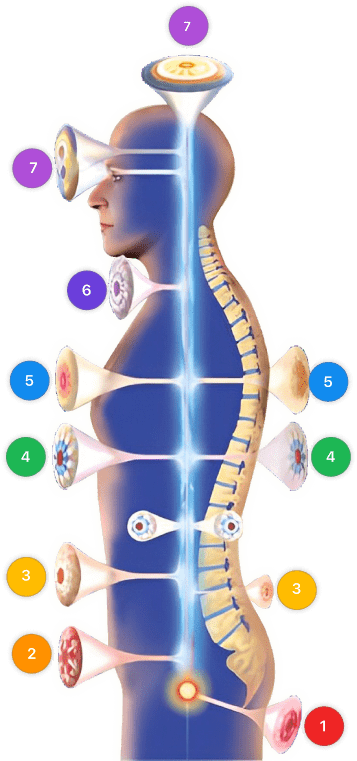 |
|
Use the Mirari Cold Plasma device to treat Sympt/complt lymph/immune other effectively.
WARNING: MIRARI COLD PLASMA IS DESIGNED FOR THE HUMAN BODY WITHOUT ANY ARTIFICIAL OR THIRD PARTY PRODUCTS. USE OF OTHER PRODUCTS IN COMBINATION WITH MIRARI COLD PLASMA MAY CAUSE UNPREDICTABLE EFFECTS, HARM OR INJURY. PLEASE CONSULT A MEDICAL PROFESSIONAL BEFORE COMBINING ANY OTHER PRODUCTS WITH USE OF MIRARI.
Step 1: Cleanse the Skin
- Start by cleaning the affected area of the skin with a gentle cleanser or mild soap and water. Gently pat the area dry with a clean towel.
Step 2: Prepare the Mirari Cold Plasma device
- Ensure that the Mirari Cold Plasma device is fully charged or has fresh batteries as per the manufacturer’s instructions. Make sure the device is clean and in good working condition.
- Switch on the Mirari device using the power button or by following the specific instructions provided with the device.
- Some Mirari devices may have adjustable settings for intensity or treatment duration. Follow the manufacturer’s instructions to select the appropriate settings based on your needs and the recommended guidelines.
Step 3: Apply the Device
- Place the Mirari device in direct contact with the affected area of the skin. Gently glide or hold the device over the skin surface, ensuring even coverage of the area experiencing.
- Slowly move the Mirari device in a circular motion or follow a specific pattern as indicated in the user manual. This helps ensure thorough treatment coverage.
Step 4: Monitor and Assess:
- Keep track of your progress and evaluate the effectiveness of the Mirari device in managing your Sympt/complt lymph/immune other. If you have any concerns or notice any adverse reactions, consult with your health care professional.
Note
This guide is for informational purposes only and should not replace the advice of a medical professional. Always consult with your healthcare provider or a qualified medical professional for personal advice, diagnosis, or treatment. Do not solely rely on the information presented here for decisions about your health. Use of this information is at your own risk. The authors of this guide, nor any associated entities or platforms, are not responsible for any potential adverse effects or outcomes based on the content.
Mirari Cold Plasma System Disclaimer
- Purpose: The Mirari Cold Plasma System is a Class 2 medical device designed for use by trained healthcare professionals. It is registered for use in Thailand and Vietnam. It is not intended for use outside of these locations.
- Informational Use: The content and information provided with the device are for educational and informational purposes only. They are not a substitute for professional medical advice or care.
- Variable Outcomes: While the device is approved for specific uses, individual outcomes can differ. We do not assert or guarantee specific medical outcomes.
- Consultation: Prior to utilizing the device or making decisions based on its content, it is essential to consult with a Certified Mirari Tele-Therapist and your medical healthcare provider regarding specific protocols.
- Liability: By using this device, users are acknowledging and accepting all potential risks. Neither the manufacturer nor the distributor will be held accountable for any adverse reactions, injuries, or damages stemming from its use.
- Geographical Availability: This device has received approval for designated purposes by the Thai and Vietnam FDA. As of now, outside of Thailand and Vietnam, the Mirari Cold Plasma System is not available for purchase or use.
References
- General Health System. (2025). ICPC-2 – English Classification. https://www.gesy.org.cy/el-gr/annualreport/icpc-2-english1-10.pdf
- Freeman AM, et al. (2023). Lymphadenopathy – StatPearls. NCBI Bookshelf. NBK513250. https://www.ncbi.nlm.nih.gov/books/NBK513250/
- MedEntic. (2024). ICD-10 – R59: Enlarged lymph nodes. https://www.medentic.app/en/resources/icd-codes/r59
- Lymphoma Action. (2019). Lymphoma symptoms. https://lymphoma-action.org.uk/about-lymphoma/lymphoma-symptoms
- Bazemore AW, et al. (2002). Lymphadenopathy and Malignancy. American Family Physician. 66(11):2103-2110. https://www.aafp.org/pubs/afp/issues/2002/1201/p2103.html
- Mohseni S, et al. (2014). Peripheral Lymphadenopathy: Approach and Diagnostic Tools. Iranian Journal of Medical Sciences. PMC3993046. https://pmc.ncbi.nlm.nih.gov/articles/PMC3993046/
- Scott GD, et al. (2018). Flow immunophenotyping of benign lymph nodes sampled by FNA. Cytopathology. PMC6221160. https://pmc.ncbi.nlm.nih.gov/articles/PMC6221160/
- Chen XG, et al. (2011). Cyclosporine, prednisone, and high-dose immunoglobulin treatment of angioimmunoblastic T-cell lymphoma. Lymphoma. PMC4012273. https://pmc.ncbi.nlm.nih.gov/articles/PMC4012273/
Related articles
Made in USA
